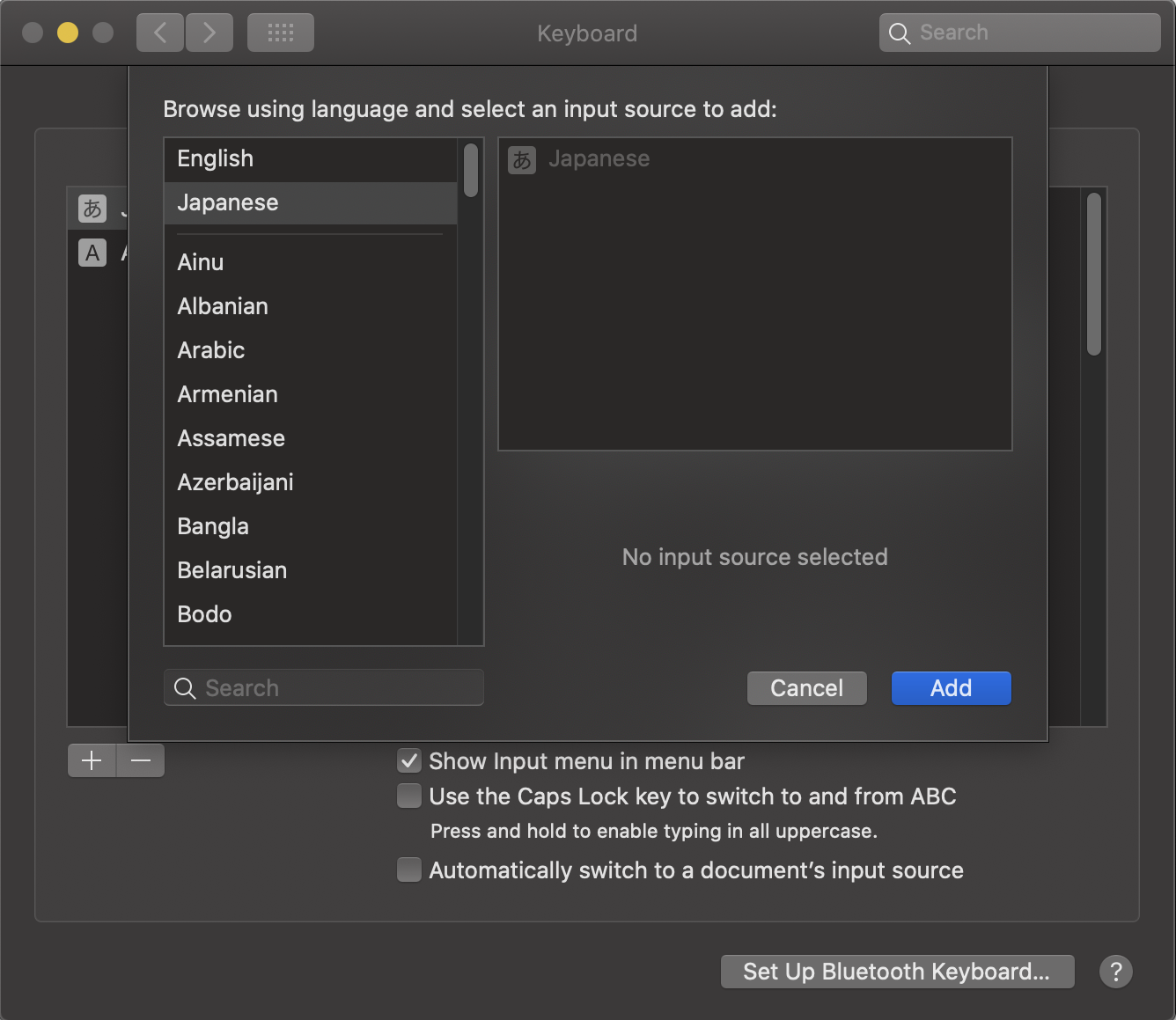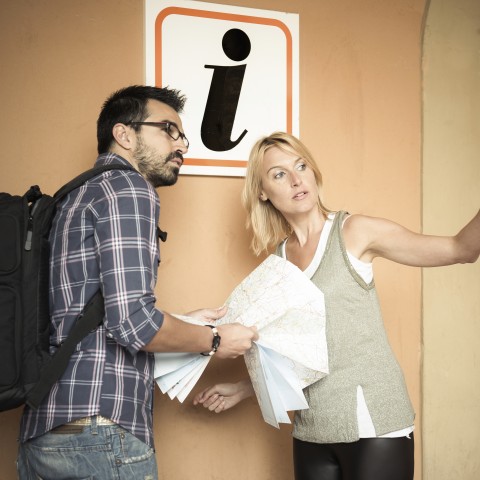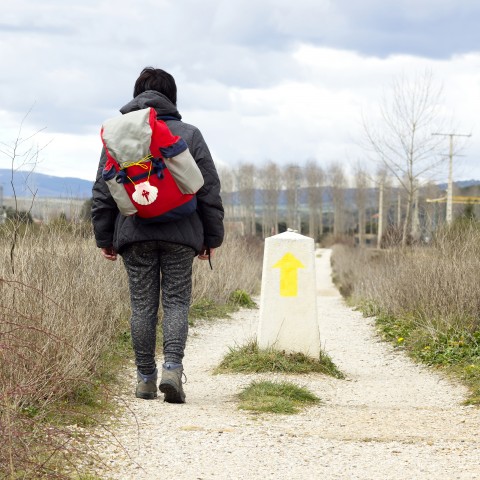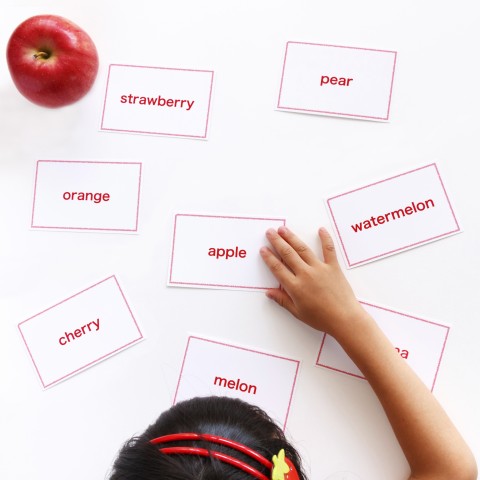
Learning animal names is a basic step in mastering everyday vocabulary in any language. From pets (our dearest companions) to wild animals (which may represent some danger), it’s important to know the names of animals in Spanish.
If you need some encouragement to face this task, here’s some:
Many farm animals in Spanish are common words in the cooking niche, so if you’ve ever ordered a pollo dish, you already know how to say “chicken.” Also, the names of wild animals in Spanish are pretty easy to learn, as many of their names are similar to their English translations (for instance, elefante and hipopótamo). You already have one foot in the door!
In this guide, you’ll find a list of animals in Spanish with their English translations. You will learn which animals are popular pets in Spain, which species are native to the country, and what different animals symbolize.
Ready to expand your vocabulary into the animal kingdom? Stick with SpanishPod101 and enjoy!

¿Quién es el mejor amigo del hombre? (“Who is man’s best friend?”)
 Table of Contents
Table of Contents
- Pets
- Farm Animals
- Wild Animals
- Sea Animals
- Bugs
- Birds, Reptiles & Amphibians
- Animal Body Parts
- Bonus: Animal Idioms and Proverbs
- Final Thoughts
1. Pets
The Spanish word for “pet” is mascota. Spanish mascotas are important in every household, as they’re considered to be uno más de la familia (“a member of the family”).
In Spain, as in most countries, dogs and cats are the preferred pets. Small mammals like rabbits and hamsters, or even small birds, are common children’s pets, as they’re easier to take care of. Exotic pets, such as snakes and other reptiles, have their fair share of fans; you can even see people walking their ferrets out in the street with a leash!
Here’s a list of popular pet animals in Spanish:
| El perro | “Dog” |
| El gato | “Cat” |
| In Spanish, there are no specific words for “puppy” or “kitten.” They’re often referred to as cachorro, a generic word for baby mammals. | |
| El hámster | “Hamster” |
| El ratón | “Mouse” |
| La rata | “Rat” |
| El conejo | “Rabbit” |
| La tortuga | “Turtle” |
| El pez | “Fish” |
| El periquito | “Parakeet” |
| Periquitos are one of the most popular pájaros (“birds”) in Spanish homes. | |
| La cobaya | “Guinea pig” |
| La serpiente | “Snake” |
| El hurón | “Ferret” |

Las mascotas (“The pets”)
2. Farm Animals
It will be useful to learn the names of farm animals in Spanish, as the animals bred in Spain are more or less the same as those in the rest of the world. On a Spanish farm, you’ll find cows, pigs, and chickens. We included rabbits in the pet section, although some people in Spain eat them too!
Get ready for your trip to la granja (“the farm”)!
| La vaca | “Cow” |
| El toro | “Bull” |
| The toro is a well-known Spanish symbol. This is partly due to the bullfighting tradition of the country, but also because the popular brandy house Osborne placed 90 giant toro silhouettes all over Spain as part of a marketing campaign. This has become part of the popular Spanish imagery. | |
| La ternera | “Calf” |
| El cerdo | “Pig” |
| El burro | “Donkey” |
| When burro is used to describe a person, it’s an insult that implies the person is not very bright. | |
| El caballo | “Horse” |
| La mula | “Mule” |
| El pollo | “Chicken” |
| La gallina | “Hen” |
Gallina is often used as a colloquial way to call someone a coward, as in the English idiom “to chicken out.”
| |
| El gallo | “Rooster” |
| El pavo | “Turkey” |
| El pato | “Duck” |
| La oveja | “Sheep” |
| El carnero | “Male sheep” |
| El cordero | “Lamb” |
| La cabra | “Goat” |
- → Would you like to hear the pronunciation of these animal names? Then head over to SpanishPod101’s lesson on farm animals!

Un par de burros (“A pair of donkeys ”)
3. Wild Animals
It is said that, in Roman times, a squirrel could cross the entire Iberian Peninsula by jumping from one tree to another. Unfortunately, the Spanish flora has decreased greatly in the last few centuries—and so has its wild fauna.
However, it’s not uncommon to find wild foxes and boars in the Mediterranean mountains or wolves in the northern forests. If you’re very lucky, you might even encounter a lynx!
Here’s a list of animals in Spanish that you might find out in the wild, both in Spain and abroad:
| El tigre | “Tiger” |
| El león | “Lion” |
| El elefante | “Elephant” |
| La jirafa | “Giraffe” |
| El rinoceronte | “Rhino” |
| El hipopótamo | “Hippopotamus” |
| El mono | “Monkey” |
| Mono, like “monkey” in English, is a generic word we use to refer to all types of primates. The more specific monkey names are often similar to their English counterparts: gorila (“gorilla”), chimpancé (“chimpanzee”) and orangután (“orangutan”). | |
| El jabalí | “Boar” |
| El zorro | “Fox” |
| El oso | “Bear” |
| El ciervo | “Deer” |
| El reno | “Reindeer” |
| El lobo | “Wolf” |
| El lince | “Lynx” |
| One of the most popular native Spanish wild animals is the Iberian Lynx, a beautiful cat with a short tail and characteristic pointy beard and ears. Unfortunately, the Iberian Lynx is an endangered species and was on the verge of extinction 20 years ago. A successful reintroduction project has increased the number of cats from 94 to 855. | |

La mirada del lince (“The lynx’s gaze”)
4. Sea Animals
The Spanish territory has over 8000 kilometers (about 4971 miles) of coastline, which explains our strong cultural bond to the sea and its marine life. The Atlantic and Mediterranean coasts are home to a number of sea animals.
Here’s a list of animals in Spanish that you’ll find underwater:
| El tiburón | “Shark” |
| El delfín | “Dolphin” |
| La ballena | “Whale” |
| El pulpo | “Octopus” |
| El caballito de mar | “Seahorse” |
| El calamar | “Squid” |
| La foca | “Seal” |
| El cangrejo | “Crab” |
| La langosta | “Lobster” |
| La gamba | “Shrimp” |
| El mejillón | “Mussel” |
| La medusa | “Jellyfish” |
| In Spanish, jellyfish share a name with the mythological Greek creature that turned people into stone by looking into their eyes. On Spanish beaches, though, medusas are very much real and common. You don’t want to cross them, as their sting hurts a lot! | |
- → Want to dive deeper? Then visit our vocabulary list Marine Animals & Fish to learn even more words along with their pronunciation!

Cuidado con la medusa. (“Beware the jellyfish.”)
5. Bugs
¡Bichos! This is the Spanish word for bugs, used on occasions when you need to point out the unpleasant company of these little animals. But it’s also commonly used to describe a person who is a bit naughty, or even as an affectionate nickname in the diminutive form bichito.
- Él quiere mucho a su gato, le llama su “bichito.” – “He loves his cat very much; he calls her his bichito.”
If you visit Spain during the summer, you won’t have to worry too much about dangerous animals. However, take into account that flies and mosquitoes won’t leave you alone!
| La hormiga | “Ant” |
| La mosca | “Fly” |
| El mosquito | “Mosquito” |
| La araña | “Spider” |
| In Spanish, the spider web is called a telaraña. | |
| El grillo | “Cricket” |
| La abeja | “Bee” |
| La avispa | “Wasp” |
| La polilla | “Moth” |
| La mariquita | “Ladybug” |
| La mariposa | “Butterfly” |
| La lengua de las mariposas (“Butterfly Tongue”) is a 1999 movie by José Luis Cuerda, set in the region of Galicia during the Spanish Civil War. It explores the relationship between a pupil and his teacher. | |

Una mariquita (“A ladybug”)
6. Birds, Reptiles & Amphibians
There are many species of wild birds, reptiles, and amphibians in Spain. Of course, you can find frogs croaking in the many Spanish water reservoirs and swallows flying over the countryside during springtime.
Fun fact: There is a breed of little green parrots, called cotorras, that are native to Argentina. They were introduced in Spain as exotic pets, and now that some of them have escaped, there is a sizable population of them in cities such as Barcelona.
| La paloma | “Pigeon” / “Dove” |
| Paloma can refer to both the city pigeon and the beautiful white dove. | |
| La gaviota | “Seagull” |
| El águila | “Eagle” |
| This word is a tricky one! Although most Spanish animal names (and nouns, for that matter) ending in “a” are gendered feminine, this one is masculine. | |
| El cuervo | “Crow” |
| El flamenco | “Flamingo” |
| The word flamenco can refer to both the traditional Spanish music genre and the pink bird. Depending on the time of year, this migratory bird resides in different wetlands of the Spanish territory, such as the Doñana National Park or the Ebro River Delta. | |
| El loro | “Parrot” |
| La golondrina | “Swallow” |
| La rana | “Frog” |
| El sapo | “Toad” |
| El lagarto | “Lizard” |
| La iguana | “Iguana” |
| El cocodrilo | “Crocodile” |
| Note that cocodrilo and “crocodile” are quite similar, but take into account that the position of the “r” is different! | |

¿Los flamencos bailan flamenco? (“Do flamingos dance flamenco?”)
7. Animal Body Parts
Now that you know several different animal names in Spanish, it’s time to learn what to call their various body parts.
| Pata | “Paw” / “Leg” |
| Cola | “Tail” |
| Ala | “Wing” |
| Garra | “Claw” |
| Garra is the generic term for animal claws. In the case of felines, who have very special claws, theirs are called zarpas. | |
| Cuerno | “Horn” |
| Pluma | “Feather” |
| Pico | “Beak” / “Bill” |
| Hocico | “Snout” |
The colloquial version of hocico is morro. This word is also used to refer to human mouths in a slightly negative (but rather joking) way, especially in the plural form morros.
| |
| Caparazón | “Shell” |
| Aleta | “Fin” |
| Bigotes | “Whiskers” |

Los gatos tienen zarpas. (“Cats have claws.”)
8. Bonus: Animal Idioms and Proverbs
| Spanish expression | Sentir mariposas en el estómago |
| English equivalent | “To feel butterflies in one’s stomach” |
| This expression is often used to describe the nervous feeling of someone who is infatuated or in love. | |
| Spanish expression | Tener la piel de gallina |
| English equivalent | “To have goosebumps” |
| This refers to the nervous reaction of the skin to cold or to powerful emotions. | |
| Spanish expression | Como pez fuera del agua |
| English equivalent | “Like fish out of water” |
| It means that someone feels completely out of their comfort zone or out of place. | |
| Spanish expression | Ser la oveja negra |
| English equivalent | “To be the black sheep” |
This refers to a family member or another individual who does not fit in.
| |
| Spanish expression | Hay cuatro gatos. |
| This literally translates to, “There are four cats.” It’s used to describe a place that’s quite empty. | |
| Spanish expression | Perro ladrador, poco mordedor |
| English equivalent | “His bark is worse than his bite.” |
| This describes the type of person who seems very brave when they talk but rarely takes action. | |
| Spanish expression | A caballo regalado, no le mires el diente. |
| English equivalent | “Don’t look a gift horse in the mouth.” |
| This proverb means that one shouldn’t be too picky when gifted with something. | |
| Spanish expression | De noche, todos los gatos son pardos. |
| This phrase means, “At night, all cats are black.” It advises that when it’s dark (and especially after drinking a bit too much), we often overlook other people’s defects. | |
| Spanish expression | Aunque la mona se vista de seda, mona se queda. |
| English equivalent | “You can’t make a silk purse out of a sow’s ear.” |
| This Spanish proverb literally means: “Even when the monkey is dressed in silk, it’s still a monkey.” It means that when someone or something is ugly, there’s not much that can be done about it. | |
| Spanish expression | Gato con guantes no caza ratones. |
| English equivalent | “A cat with gloves catches no mice.” |
| This phrase warns that it’s better to be dressed for the job at hand rather than trying to be too fancy. | |
| Spanish expression | A perro viejo todo son pulgas. |
| English equivalent | “Old dogs have all the fleas.” |
| Usually, this expression is used in reference to all of the illnesses and various health-related problems that come with age. | |
9. Final Thoughts
In this article, we provided you with a list of animals in Spanish that will help you navigate situations involving anything from pets to nasty bugs!
What’s your favorite animal? Do you remember its name in Spanish?
At SpanishPod101.com, you can continue learning the Spanish language and exploring Spanish culture. There are plenty of free resources, such as vocabulary lists and our word of the day tool, as well as lessons tailored for every level of fluency.
Happy learning on SpanishPod101.com!

Top 10 Questions in Spanish and How to Answer Them

Can you ask questions in Spanish yet?
We’re sure you’re aware that to master any language, you can’t rely solely on affirmative sentences. You need to know how to ask questions, though some questions are more important than others. This is especially true for non-native speakers who are just starting out. Knowing the right questions can help you survive self-introductions, and others can get you out of sticky situations.
The first thing you need to learn, if you haven’t yet, are Spanish question words. Knowing these words, as well as the most common questions in Spanish, you can start asking your own questions! You can find a list of Spanish question words in our article about pronouns.
Now, onto our list of Spanish questions and answers for beginners!
 Table of Contents
Table of Contents
- ¿Cómo te llamas? – “What’s your name?”
- ¿De dónde eres? – “Where are you from?”
- ¿Hablas español? – “Do you speak Spanish?”
- ¿Cuánto tiempo llevas estudiando español? – “How long have you been studying Spanish?”
- ¿Alguna vez has estado en España? – “Have you ever been in Spain?”
- ¿Cómo es…? – “How is…?”
- ¿Te gusta la comida española? – “Do you like Spanish food?”
- ¿Qué estás haciendo? – “What are you doing?”
- ¿Qué te pasa? – “What’s wrong?”
- ¿Cuánto cuesta? – “How much is it?”
- How SpanishPod101.com Can Help You Master Spanish
1. ¿Cómo te llamas? – “What’s your name?”
Our first question is one that you’ve probably heard before. The literal translation of this question would be something like “How are you called?” But while that might sound weird, you probably realize that this is just the classic question we ask to learn someone’s name. This question is very important, and usually one of the first ones you learn when you start studying Spanish.

Other Ways of Asking this Question
There’s another way to ask the same question, though it’s not as popular as the one above:
¿Cuál es tu nombre?
This one doesn’t have a strange literal translation. Instead, it just means “Which is your name?” which makes it easier to explain, doesn’t it? Because it’s a near-literal translation of the English question, you might be tempted to use this one instead of ¿Cómo te llamas? But remember that the first one we showed you is more common, so you’ll sound more natural if you use that one.
How to Answer this Question
There are a few different ways of answering this question, and even though some are longer than others, they’re all equally valid. In this case, there’s no one answer that’s most common, except for maybe the last one, which is also the easiest. It’s your lucky day!
Example: Me llamo Francisco.
Translation: “My name is Francisco.”
Example: Soy Ana.
Translation: “I’m Ana.”
Example: Juan.
Translation: “Juan.”
Something else you might find useful is how to follow your answer after someone has asked you your name. You can add ¿Y tú? (“And you?”) at the end if you would also like to know their name.
If you’re curious about Spanish names, here’s an article from late 2018 that lists some common names in Spain.
2. ¿De dónde eres? – “Where are you from?”
Here’s another one of the most basic Spanish questions that we commonly use when meeting someone for the first time.
Other Ways of Asking this Question
There’s another common way of asking this question, which we use in English as well.
Example: ¿De dónde vienes?
Translation: “Where do you come from?”
How to Answer this Question
Once again, there are different, equally valid answers we can give to a question like this. You can refer to your nationality or to your home country.
Example: Soy húngaro.
Translation: “I am Hungarian.”
Example: Soy de Hungría.
Translation: “I am from Hungary.”
Example: Vengo de Hungría.
Translation: “I come from Hungary.”
3. ¿Hablas español? – “Do you speak Spanish?”
This is a question that you might be asked, or that you might ask, someday. Of course, you can change it to ask about any other language. For example, if you’re in Spain and you’re talking to someone in Spanish, but you’re not feeling too comfortable yet, you could ask them: ¿Hablas inglés? (“Do you speak English?”) and hope they say yes!
How to Answer this Question
There are a few different answers you could give someone who asks you this question.
There are the simple answers, which you probably already know:
Example: Sí.
Translation: “Yes.”
Example: No.
Translation: “No.”
There’s another simple alternative to “yes” or “no” in case you didn’t understand the question in the first place (which we could say is really another way of telling them you’re not too fluent yet):
Example: ¿Qué?
Translation: “What?”
And a few more elaborate answers:
Example: Un poco. / Un poquito.
Translation: “A bit.” / “A little bit.”
Example: Hablo [un poco] de español.
Translation: “I speak [a bit of] Spanish.”
4. ¿Cuánto tiempo llevas estudiando español? – “How long have you been studying Spanish?”
When you meet someone from Spain and tell them you study Spanish, they might ask how long you’ve been doing that for.
How to Answer this Question
The answer you give (or that you’re given) will obviously vary, but you have two simple options. One is to just say the short answer:
Example: Un año.
Translation: “One year.”
While this will work just fine, we do have a slightly longer (no panicking, it’s just one extra word!) reply:
Example: Llevo tres meses.
Translation: “[I have been] for three months.”

Notice that both the question and the “long” answer use the verb llevar. This verb usually means “to bring,” but it’s also used to talk about the amount of time you’ve been doing something for. Another example using this verb would be: Llevo dos años viviendo en Barcelona. (“I’ve been living in Barcelona for two years.”)
5. ¿Alguna vez has estado en España? – “Have you ever been in Spain?”
Following are some useful questions and answers for Spanish-learners who are traveling to a Spanish-speaking country or chatting with someone who’s familiar with Spain.
Other Ways of Asking this Question
Example: ¿Has ido alguna vez a España?
Translation: “Have you ever gone to Spain?”
Example: ¿Has estado en España?
Translation: “Have you been in Spain?”
Example: ¿Alguna vez has visitado España?
Translation: “Have you ever visited Spain?”
Or, a slight variation:
Example: ¿Es la primera vez que vienes a España?
Translation: “Is this the first time you’ve come to Spain?”
How to Answer this Question
This is another yes-or-no question, so we have a couple of obvious answers. However, there are a few more options, including longer answers, that you might like to use if you’re feeling confident enough.
Example: No, nunca he estado.
Translation: “No, I’ve never been there.”
Example: He estado en España dos veces.
Translation: “I’ve been in Spain twice.”

6. ¿Cómo es…? – “How is…?”
This is a more open-ended question that you can alter based on your inquiry; it’s used to ask someone to describe something. In English, the translation will sometimes be something more like: “What’s ___ like?” Here are some examples:
Example: ¿Cómo es Granada en invierno?
Translation: “How is Granada in the winter?”
Example: ¿Cómo es el interior de una pelota?
Translation: “What is the inside of a ball like?”
How to Answer this Question
Because there are so many different questions one could ask, there are even more answers one could give. An example would be to use an adjective, but other times, the question might require a longer explanation.
Example: ¡Es maravilloso!
Translation: “It’s wonderful!”
7. ¿Te gusta la comida española? – “Do you like Spanish food?”
Spaniards are very, very proud of their cuisine. That means that if you’re visiting Spain (or have visited in the past), and you meet someone Spanish, it’s quite likely that they’ll ask you this. In case you’re wondering, they’re expecting you to tell them you love it.
Other Ways of Asking this Question
Here’s another common way to ask this question:
Example: ¿Qué te parece la comida española?
Translation: “What do you think about Spanish food?”

How to Answer this Question
Example: ¡Me encanta!
Translation: “I love it!”
Example: Me gusta mucho.
Translation: “I like it very much.”
We hope you never use it to answer this question, but we thought we should probably teach you how to say you don’t like it.
Example: No me gusta [nada].
Translation: “I don’t like it [at all].”
8. ¿Qué estás haciendo? – “What are you doing?”
This question is pretty clear, we think! It can be asked in different contexts and with different intentions, but in any case, we understand it.
Other Ways of Asking this Question
We have another similar way of asking this question:
Example: ¿Qué haces?
Translation: “What do you do?”
This is the literal translation, but it may also refer to what one is doing at the moment of asking the question.
How to Answer this Question
Obviously, there are many ways of answering this question, because there are many things you could be doing.
Example: Estoy limpiando mi habitación.
Translation: “I’m cleaning up my room.”
We don’t want to say anything, but in case you ever need it, we thought we’d give you the following example:
Example: No es lo que parece.
Translation: “It’s not what it looks like.”
9. ¿Qué te pasa? – “What’s wrong?”
Sometimes you might feel like someone is down or struggling. You need to know the right question to ask in order to help them out.
Other Ways of Asking this Question
While this version of the question doesn’t have exactly the same meaning, you could still ask it in a similar situation:
Example: ¿Estás bien?
Translation: “Are you okay?”
How to Answer this Question
You never know what reply you’re going to get, but there are a few answers you’re likely to hear. It’s also possible that the person you ask won’t want to give you a direct answer:
Example: Nada.
Translation: “Nothing.”
Or maybe they’ll reply with an adjective, by telling you an emotion they’re feeling.
Example: Estoy enfadado/a.
Translation: “I’m angry.”
Example: Estoy triste.
Translation: “I’m sad.”

Perhaps they’ll really explain the reason something’s wrong:
Example: Mi hermana está muy enferma.
Translation: “My sister is very sick.”
10. ¿Cuánto cuesta? – “How much is it?”
If you want to go shopping in a Spanish-speaking country, but you can’t find the price tag, it will be useful to know these simple Spanish questions and answers.
Other Ways of Asking this Question
Example: ¿Cuánto es?
Translation: “How much is it?”
How to Answer this Question
Example: Cuesta 400 €.
Translation: “It costs 400 €.”
Example: Son 3 €.
Translation: “It’s 3 €.”

11. How SpanishPod101.com Can Help You Master Spanish
We hope you found these common Spanish questions and answers useful, and that they inspire you to ask more questions and learn more in order to become fluent in Spanish.
Are there any questions we missed? Let us know in the comments, and we’ll do our best to help you out!
Remember there’s a lot more that you can learn at SpanishPod101.com. Check out our great variety of lessons, our free vocabulary lists, and much more.

How to Pass the DELE Spanish Proficiency Test

At some point in your Spanish-learning journey, you’ll probably want to test your mettle and see how far you’ve come. Few things are as motivating as tangible progress, after all! And depending on your reasons for learning Spanish, becoming certified in your Spanish proficiency may be necessary to achieve your goals.
That’s where the DELE Spanish test comes in.
In this article, we’ll explain everything about the DELE, one of the official Spanish language exams: what it is, how to sign up, and why you should care. You’ll also learn all the details about the six possible DELE Spanish exam levels and how to identify yours.

For those of you who don’t know much about DELE, this article will inform you about everything you need to know. For those of you who have decided to take the exam, this article is also designed to help you prepare for the big day. In particular, we’ll give you an in-depth look at each of the four sections of the exam and offer you some tips and techniques to succeed!
 Table of Contents
Table of Contents
- What is the Spanish DELE Exam?
- Introduction to the DELE Exam
- DELE A1
- DELE A2
- DELE B1
- DELE B2
- DELE C1
- DELE C2
- Tips on Preparing for DELE
- Conclusion
1. What is the Spanish DELE Exam?
DELE stands for Diploma de Español como Lengua Extranjera, or in English, “Spanish as a Foreign Language Diploma.”
This is an official diploma that certifies various levels of proficiency in Spanish.
This certificate is issued by the Instituto Cervantes, the official representative of the Ministerio de Educación y Formación Profesional de España. El Instituto Cervantes is an official Spanish institution recognized worldwide, which makes the DELE the best choice for validating your Spanish proficiency.
This exam is designed by following the Common European Framework of References for Languages. So, it’s made and designed by the standards of the European Union.

1- Why Should You Take the DELE Exam?
There are many possible reasons why you would want to pass a DELE:
- If you’re considering entering into a Spanish university
- If you’re planning to apply for a Spanish permit
- If you want to find a job in Spain or any other Spanish-speaking country
- If you want to request a Spanish citizenship
Whatever your reasons, it’s good to know that the DELE is:
- Valid for a lifetime (it does not have an expiration date)
- Internationally recognized
- In accordance with the CEFR Common European Framework, for levels A1 through C2
Yes! The Spanish DELE certificates cover all the levels, from A1 to C2. It’s a highly recommended certificate if you want to access the professional and academic world of a Spanish-speaking country.
In Spain, DELE certificates are recognized by institutions and national organizations such as the Ministry of Justice of Spain, Ministry of Health of Spain, and some general State Administration and public bodies.
Generally, it’s recommended that a Spanish student aims to pass the DELE Spanish exam at the B2 level. This shows that the student can interact with natives, have a clear argument, and understand the gist of what they read and hear. Further, many universities and official institutions in Spanish-speaking countries ask that candidates attain the B2 certification.
With the basics out of the way, let’s move on to our section on DELE preparation and what to expect.

2- What Do the DELE Exams Look Like?
The DELE exam consists of four distinct sections:
1. Reading (Compresión de lectura)
2. Writing (Expresión e interacción escrita)
3. Listening (Comprensión auditiva)
4. Speaking (Expresión e interacción oral)
Depending on which level you’re testing for, you may be allotted a different amount of time per section.
Keep reading to learn more about each section!
3- Additional DELE Information
Before we move forward, we’re going to cover a few key points that you should know before you start preparing!
A- Subjects
The DELE exams tend to cover four key subjects:
- Personal
- Public
- Education
- Professional
Thus, many of the questions, texts, and listening materials will have something to do with one of those key areas. The idea is to test your Spanish proficiency in a variety of contexts, depending on your goals and which level you’re testing for.
B- Who Can Take DELE?
You may be glad to hear that there are no restrictions concerning who can take the exam! All of the age and nationality restrictions that were previously in place have been taken down.
On a side note, if you’re younger than sixteen years old, you’ll need to have a parent or guardian help you register.
You can find some more information about who can take the test on this official web page.
C- Where Can You Sign Up & Take the Exam?
There are testing centers for the DELE exam all over the globe. To find your nearest testing center, you can check on the official web page and reach out to the location to register.
If you’re in Spain, you can register from the Instituto Cervantes web page directly. But if you’re testing elsewhere, you must register with your nearest location.
2. Introduction to the DELE Exam
In order to prepare for the DELE, you need to know which level you’re at and what level you’re aiming for.
Why?
Well, the level you decide to test for will determine a number of factors concerning how you should prepare. For example, different DELE levels may give test-takers different amounts of time per section or cover specific topics not included in other levels.
Be reasonable with your goals, though. It would be very difficult to push yourself from the A1 level (beginner) to the C1 level (advanced), unless you give yourself six months or more to study. Anything can be achieved if you study hard, though we do recommend you keep your goals doable for you and your lifestyle!
Now we’ll provide all the information and details you need to pass the Spanish DELE exam.
| Level | Description | You should: |
| A1 DELE A1 A1 – for young learners (candidates eleven to seventeen years old) | Beginner | Understand and use familiar everyday Spanish expressions as well as simple statements about practical needs Introduce yourself to someone in Spanish Ask someone questions in Spanish Answer similar types of questions Have very basic conversations if the other person is talking slowly and deliberately articulating |
| A2 DELE A2 | Lower-intermediate | Understand and be able to use daily Spanish expressions relevant to your surroundings, like personal information, shopping phrases, or interesting locations Address questions about your immediate needs You should be able to communicate about usual or known aspects of your past or your environment |
| B1 DELE B1 A2/B1 for young learners (candidates eleven to seventeen years old) The candidates who pass will receive one of the two certificates, depending on their results. | Intermediate | Understand main topics like studies, work, or daily life when you’re listening to or reading texts Be prepared to handle situations that take place in these familiar contexts Write simple but coherent texts on familiar topics like experiences, plans, wishes, or opinions |
| B2 DELE B2 | Upper-intermediate | Understand abstract or technical situations, whether written or spoken, as well as accents and variations of the Spanish language Speak in Spanish fluently and naturally without hesitation Debate when you write about several topics and be capable of defending your opinion |
| C1 DELE C1 | Advanced | Understand variations of the Spanish language, and recognize variations, intentions, and meanings Express yourself fluently, spontaneously, and without any apparent effort Always find the adequate expression for every situation and context Write very difficult texts effortlessly and be able to build high-quality texts with a coherent structure |
| C2 DELE C2 | Proficient | Handle any situation and understand everything, written or spoken, regardless of how complex, abstract, or unfamiliar it is, or what variety of Spanish is used Express yourself spontaneously, fluently, and with exceptional semantic and grammatical precision in every context |
The content of your DELE exam depends on your level, so it’s important that you become familiar with each of the four exam sections based on level. They all follow the structure given above, but the time allotments and exercises may change.

Tip: Remember to do the sections you’re good at first, and focus on the more difficult ones last so you can spend more time on those sections. That way, you don’t lose your score!
3. DELE A1
Reading test
For your reading test, you should be able to understand common Spanish words and names, as well as easy phrases such as those on street signs or in catalogues.
- Duration: 45 min
- Sections: 4
- Exercises: 25
Listening test
You should be able to recognize basic Spanish words and expressions that are used in everyday interactions and in contexts that are familiar to you.
- Duration: 20 min
- Sections: 4
- Exercises: 25
Speaking test
You should be able to use easy Spanish expressions and sentences to describe where you live and the people you know.
- Duration: 15 min
- Sections: 4
Writing test
For the writing portion, you should be able to write simple phrases and sentences, such as birthday wishes or a postcard.
- Duration: 25 min
- Sections: 2
- This reading part of the DELE exams takes the 25 %
4. DELE A2
Reading test
If you’re planning to take the DELE A2, you should be capable of reading and understanding short and easy Spanish texts.
- Duration: 60 min
- Sections: 5
- Exercises: 30
Listening test
For the listening test, you should understand Spanish sentences and Spanish vocabulary about everyday topics.
- Duration: 35 min
- Sections: 5
- Exercises: 30
Speaking test
You should be able to communicate in a simple fashion about daily things and activities. You should be able to have short social conversations in Spanish.
- Duration: 15 min
- Sections: 4
Writing test
You should be able to write basic Spanish notes and messages that relate to your immediate needs.
- Duration: 50 min
- Exercises: 30

5. DELE B1
Reading test
You should be able to understand ideas and concepts used in everyday life, such as words and phrases in Spanish TV shows.
- Duration: 40 min
- Sections: 5
- Exercises: 30
Listening test
If you’re taking the DELE B2, you should understand texts written in everyday Spanish language. You should also be able to grasp the description of events, feelings, and wishes in personal letters.
- Duration: 70 min
- Sections: 5
- Exercises: 30
Speaking test
You should be able to handle almost all situations when traveling to a Spanish-speaking country. In addition, you should be able to spontaneously take part in conversations about familiar and daily topics.
- Duration: 15 min
- Sections: 4
Writing test
You should be able to write easy and well-connected Spanish texts about familiar topics and personal interests. You should also be able to write personal letters describing any of your experiences and impressions.
- Duration: 60 min
- Sections: 2
6. DELE B2
Reading test
For the DELE B2 reading test, you should be capable of understanding articles on current issues as well as contemporary literature in Spanish.
- Duration: 70 min
- Sections: 4
- Exercises: 36
Listening test
You should be able to understand speeches or conferences, including complex chains of thought. In addition, you should be able to follow TV news and understand most movies in standard Spanish.
- Duration: 40 min
- Sections: 5
- Exercises: 30
Writing test
For the writing test, you should be able to write clear Spanish texts about a variety of topics and elaborate on a specific point of view.
- Duration: 80 min
- Sections: 2
Speaking test
For the speaking test in Spanish, you should be fluent and spontaneous when having a conversation with natives.
Oh, yes! This level is quite a lot harder!
You should also be able to elaborate and defend your point of view in debates.
- Duration: 80 min
- Sections: 2
7. DELE C1
Reading test
For the DELE C1 reading test, you should be able to read long and complex Spanish texts with different literary styles, as well as technical instructions.
- Duration: 90 min
- Sections: 5
- Exercises: 40
Listening test
For the listening portion, you should be able to understand speech, including dialogue in TV shows and movies, without effort. So, try some Netflix in Spanish and see if this DELE exam is for you.
- Duration: 50 min
- Sections: 4
- Exercises: 30
Writing test
For the writing test, you should be able to write clear Spanish, especially for things such as informative reports or essays for a Spanish university.
- Duration: 80 min
- Sections: 2
Speaking test
If you know how to write an essay in Spanish, the speaking test should be pretty easy for you.
You should be able to express yourself fluently and without looking for the right expression. We recommend that if you’re at this level, you visit a Spanish-speaking country to practice before taking your DELE exam!
- Duration: 20 min
- Sections: 3
8. DELE C2
This test is for masters, but if your Spanish is great and you need to take the DELE, this is the level for you.
Combined Skills: Reading + Listening Test
You should be able to read all forms of written Spanish with ease, even when the topics are abstract and complex (such as manuals or Spanish literature).
- Duration: 105 min
- Sections: 6
- Exercises: 52
Combined Skills: Listening + Writing + Reading Test
You should be able to read all forms of written Spanish, including literature.
- Duration: 150 min
- Sections: 3
Combined Skills: Speaking + Reading Test
For this section of the test, you should be able to read all forms of written Spanish. In addition, you should be able to introduce yourself, have a conversation about any subject,and talk about things like newspaper headlines.
- Duration: 20 min
- Sections: 3
Good luck!
9. Tips on Preparing for DELE
Here, we’ll share some useful tips on how to prepare for and pass your Spanish exam.
1- Book the exams first.
We recommend that you book the exam first and give yourself enough time to prepare. That way, you don’t procrastinate; you know you have to study, so you’ll set yourself to it.
If you just study for the sake of it and leave the rest for when you feel prepared, believe me, you will never feel prepared.
To prepare, do as many practice tests as you can. Time yourself, do the parts you’re good at first, and do them fast so you can spend more time on the parts you’re not as good at. You can find mock exams on the Instituto Cervantes web page.
2- Work on your weaker areas.
Let’s say that while you’re preparing for your exam, you discover that your reading skills aren’t that good, but your listening skills are great. Well, work more on your reading. By spending more time on your weaker areas to begin with, you’re allowing yourself to study and improve while you still have the focus and motivation to do so! You can always brush up on your stronger areas afterward.

3- Practice managing your time.
Have you ever done poorly on a test that you studied hard for? You knew the information and had the skills, but you failed to complete the test on time…
You can avoid this situation by learning how to manage your test-taking time now. A great way to do this is by timing yourself while taking mock tests, and figuring out how to improve your times.
10. Conclusion
You were lucky enough to have found SpanishPod101.com, the best place online to learn Spanish vocabulary and grammar, get expert tips, and practice everything you’re learning.
If you’re a beginner, there are a few blog posts you may want to check out: How to Say Hello in Spanish, How to Say Thank You in Spanish, and How to Say I Love You in Spanish.These articles will provide you with basic phrases for some of life’s most common interactions and situations!
Is your Spanish a bit more advanced? Then see our article about Spanish Travel Phrases to prepare for your trip to a Spanish-speaking country. It can also help you get a great score on your DELE Spanish exam.
Of course, if you’re a master of the Spanish language, then you should check out this post and share it now on social media in perfect Spanish. (And while you’re at it, share how much you’re going to kill it on your DELE exam!)
Before you go, let us know in the comments if you have any more questions about the DELE exam that we didn’t cover here. We’ll do our best to help you out!
Happy Spanish learning!

Learn the Top 10 Spanish Sentence Patterns

Often, when you start learning a new language, you’re not really sure how to begin. Random words? Grammar? Basic sentences, maybe? While perhaps memorizing sentences isn’t what you’re looking for when you decide to begin studying, the truth is that these basic Spanish sentence patterns will actually prove very useful. When you’re completely lost at the beginning of your language-learning journey, knowing them will help you have a precise idea of how to have a basic yet meaningful conversation.
If you memorize these ten most basic and useful Spanish sentence structures, you’ll be able to generate hundreds of natural sentences and converse with ease and confidence. We promise that you’ll use most of these sentence patterns every time you have a conversation in Spanish!
 Table of Contents
Table of Contents
- Linking Nouns
- Using Adjectives to Describe Things
- Expressing “Want”
- Expressing “Need”
- Expressing “Like”
- Politely Asking Someone to Do Something
- Asking for Permission
- Asking for Information About Something
- Asking About Time
- Asking About Location or Position
- How SpanishPod101.com Can Help You Master Spanish
1. Linking Nouns
We thought that showing you how to link nouns would be a good way to start. This is a really basic pattern that we use all the time. In Spanish, we always use the verb ser (“to be”) for this pattern:
Example: Juan es mi hermano.
Translation: “Juan is my brother.”
Example: Mi hermano es taxista.
Translation: “My brother is a taxi driver.”
Example: Ese reloj fue un regalo de mi mujer.
Translation: “That watch was a present from my wife.”

2. Using Adjectives to Describe Things
In English, to create a basic sentence using adjectives, you only need one verb: the verb “to be.” Of course, there are other verbs you could use to make complex sentences, but because we’re only looking at easy patterns, we’ll ignore them for now.
Just like we’ve mentioned in other articles and lessons at SpanishPod101.com, in Spanish, there are two different verbs that are equivalent to the verb “to be” in English. These are ser and estar. When using adjectives, it’s really important to know the difference between these two, so we’ll quickly remind you of their specific meanings. Let’s look at the following examples:
Example: Eres preciosa.
Translation: “You’re gorgeous.”
Example: Estás preciosa.
Translation: “You look gorgeous.”
The sentences look very similar in Spanish, but look at the English translations! Ser and estar are both irregular verbs, so you might be a little bit confused about which verb is which. But we’re sure you can already start to see the difference between them.
In the first example, Eres preciosa, we use the verb ser, which refers to something permanent or something that’s true for a very long period of time. Whoever uses this sentence is telling a girl that she is gorgeous, but not just in that moment. It doesn’t mean she’s wearing, for example, a nice dress (even though she might be)! It means that she is always gorgeous.
However, you might have noticed that we translated the second example, Estás preciosa, as “You look gorgeous.” Even though estar, which is the verb we used, also means “to be,” it takes away the sense of permanence that we saw in the previous example. So when someone uses this sentence in Spanish, they’re implying that the girl looks good in the clothes or makeup she’s wearing. This doesn’t necessarily mean that she doesn’t look good at other times; in this case, it might just mean that she’s exceptionally beautiful in that moment.
Example: Está buenísimo.
Translation: “It’s amazing.”
Example: La película que vimos anoche era divertidísima.
Translation: “The movie we watched last night was hilarious.”

3. Expressing “Want”
Another important Spanish sentence for beginners is that which lets you tell someone you want something (or want to do something). The verb we use in Spanish is querer, which means both “to want” and “to love.”
The structure is quite simple, and it’s similar to English. Let’s look at a few examples:
Example: Quiero esto.
Translation: “I want this.”
In this first example, the object of the sentence—the thing that is wanted—is the pronoun “this,” so it’s a noun phrase. This sentence doesn’t specify what we’re talking about, but we assume that whoever uses this sentence is pointing at something. In any case, neither Spanish nor English require a preposition, or any other kind of particle, before the thing that is wanted.
The following examples, however, use a verb phrase instead:
Example: Quiero preguntarte algo.
Translation: “I want to ask you something.”
Example: Quiero ser una buena persona.
Translation: “I want to be a good person.”
As you might have noticed in these sentences, while English does need the preposition “to,” Spanish doesn’t require anything between the verb querer and the next verb. Something you must always remember, however, is that the second verb always needs to be in its infinitive form, which, as you might remember from our previous article on conjugations, is the one we find in a dictionary.

4. Expressing “Need”
There are two basic ways of expressing “need” in Spanish, and they both have equivalents in English, so they are pretty easy to translate. The verb necesitar means “to need (to)” and the verb phrase tener que is equivalent to “to have to” in English.
In Spanish, just like in English, we can use necesitar (“to need [to]”) whenever we need something, or need to do something. But in the case of tener que (“to have to”) it only works when we need to do something; in other words, there has to be a verb right after. This verb, just like we explained happens when expressing “want,” needs to be in its infinitive form.
First of all, we’ll look at a simple example:
Example: Necesito un bolígrafo.
Translation: “I need a pen.”
That’s simple, right? It’s the same structure as in English: “I need” + article + noun. Let’s keep going.
Example: Necesito comprar pan.
Translation: “I need to buy bread.”
Example: Tengo que practicar.
Translation: “I have to practice.”
Example: Me tengo que ir.
Translation: “I have to go.”
Example: Tengo que ir al baño.
Translation: “I have to go to the bathroom.”
There are only a few things you need to remember. We’ve already mentioned a couple of them: when we can use each of these verbs and that the next verb always needs to be in its infinitive form.
Something else you need to remember is that when we use the verb necesitar, we can simply add the next verb afterwards. But when using the other verb, tener que, always use the conjunction que before the next verb.

5. Expressing “Like”
We’re sure you saw this coming. Expressing whether you like something or not is quite common in basic conversations, so it’s a pattern that you should definitely learn. It’s not hard to learn at all, but compared to other Spanish sentence patterns, it is a bit strange. You’ll need to remember that it always requires a personal pronoun in front of the verb. Our article about pronouns might help you refresh your memory.
This pronoun isn’t the subject of the sentence, but when translated into English, it does become the subject. That sounds weird, right? Well, this is because this structure can be considered an equivalent of a passive sentence. Gustar doesn’t exactly mean “to like.” It actually means something along the lines of “to be liked.”
If you’re familiar with Spanish conjugations, you might notice that the verb in the first example below, gustas, isn’t in the first person, but in the second person. This is because the person that is liked is “you,” so “you” is the real subject in this sentence.
Example: Me gustas.
Translation: “I like you.”
In the second example, however, we changed the person who is liked to a third-person subject: Carla. Even though, in English, both the subject and the verb stay the same as in the first example (“I like”), the verb in Spanish changes to me gusta, because now the subject is Carla.
Example: Me gusta Carla.
Translation: “I like Carla.”
Example: Me gusta cocinar.
Translation: “I like cooking.”
In the third example we just saw, the verb is in the third person, and in this case, the subject is not a person, but an action. The literal translation would be “Cooking is liked by me.”
Example: Me gusta ver el atardecer en la playa.
Translation: “I like watching the sunset at the beach.”

Example: No me gustan los plátanos.
Translation: “I don’t like bananas.”
Finally, the last two examples were mostly for you to see a couple more sentences that use the same structure. The last one is just another example of how los plátanos is the actual subject in the sentence, because, just like the verb, it’s in the plural.
6. Politely Asking Someone to Do Something
It might be useful to learn how to ask people to do things politely. To begin with, you might like to know the word for “please” in Spanish. We actually use two words for this: por favor. Just like in English, por favor can be either at the beginning or at the end of the sentence.
Example: Por favor, siéntate.
Translation: “Please, sit down.”
Example: Escúchame, por favor.
Translation: “Listen to me, please.”
Example: Por favor, ponte en la cola.
Translation: “Please, get in line.”

You must know that being polite isn’t all about using the word “please.” “Thank you” is another expression that might come in handy, so why not take a look at our article on how to say “thank you” in Spanish?
7. Asking for Permission
The last few patterns we’re going to see today are all going to be different kinds of questions in Spanish. The first question pattern is how to ask for permission. In Spanish, the verb you need to know to ask for permission is poder (“can”), which we learned in our previous article about verbs. You might be glad to know that we don’t have different verbs for “can” and “may,” so you don’t need to worry about using the right verb.
All you need to know is that, whenever you need to start a question with “Can I…?” or “May I…?” you can start it with ¿Puedo…? followed by a verb in its infinitive form, and anything else you might need. And if you need to ask someone if they can do something for you, you can ask them: ¿Me puedes…? Once again, this will always be followed by a verb in its infinitive form.
Example: ¿Puedo pasar?
Translation: “May I come in?”
Example: ¿Me puedes dar tu número de móvil?
Translation: “Can you give me your phone number?”
Example: Por favor, ¿me puedes pasar la sal?
Translation: “Please, can you pass me the salt?”
Example: ¿Le puedes dar esto a tu hermana?
Translation: “Can you give this to your sister?”
We decided to include the last question, which is actually asking for a favor for someone else. Instead of using the pronoun me, like in the previous two sentences, we use the pronoun le, which in this case means “to her,” because it’s referring to this person’s sister.
8. Asking for Information About Something
We’re sure you agree with us about the importance of being able to ask for information about things. There are so many things we could ask about, but we chose to give you only three examples.
The first example is something that we all have to ask sometimes. You’ll probably need it when you visit a Spanish-speaking country for the first time, encounter something new (such as food, or even objects), or don’t understand what someone said during a conversation in Spanish. This is a question with many uses that we’re sure you’ll appreciate.
Example: ¿Qué es eso?
Translation: “What is that?”
There’s no doubt that you’ll also find the following question very useful.
Example: ¿Cómo te llamas?
Translation: “What is your name?”
And finally, we’ve included a more complicated question so that you see how a longer sentence is built. Because we’re only learning basic patterns, don’t worry too much about it for now! All you need to know for now is the structure of the sentence, which is actually the exact same structure as the sentence in English.
Example: ¿Cuál es el plato que comimos la última vez?
Translation: “Which is the dish we ate the last time?”
9. Asking About Time
Don’t give up yet, we’re almost done here! The next question patterns we’ll learn are those related to time. Here, there’s one interrogative pronoun you should always remember, which is cuándo, and it means “when.”
Example: ¿Cuándo es tu cumpleaños?
Translation: “When is your birthday?”
Example: ¿Cuándo es la reunión?
Translation: “When is the meeting?”
Example: ¿A qué hora llega tu vuelo?
Translation: “What time does your flight arrive?”

Cuándo will always be helpful when you need to know when something is. However, sometimes you might need to be a little bit more specific, like in the last example we just saw. When you need to know what time something is, use the expression ¿A qué hora…? Notice that we always need the preposition a in this expression, but when we want to ask what year or what day something is, we don’t need any preposition. Instead, it will be something like this:
Example: ¿Qué día es el examen?
Translation: “What day is the exam?”
10. Asking About Location or Position
Finally, our last question pattern is for asking about location. There’s one word you must remember, which is dónde, the word for “where.”
Whenever you need to ask where something or someone is, you can just ask ¿Dónde está…? (“Where is…?”). Let’s see a couple of examples:
Example: ¿Dónde está el baño?
Translation: “Where is the bathroom?”
Example: ¿Dónde está el ascensor?
Translation: “Where is the elevator?”
That’s pretty easy to remember, isn’t it? Well, it does get a little bit harder when we want to ask something else, because we might need to add prepositions to this word, just like what happened in the previous section.
Example: ¿De dónde eres?
Translation: “Where are you from?”
11. How SpanishPod101.com Can Help You Master Spanish
With these basic Spanish sentence patterns, you’ll be able to have all sorts of basic conversations about different topics. Of course, this won’t magically make you fluent in Spanish, but it will help you get there. Luckily, at SpanishPod101.com, we have everything you’ll ever need to learn Spanish. For example, our lesson on how to greet people correctly.
Learn a new word every day with our Free Word of the Day, or all the vocabulary you might need in our vocabulary lists.
In the meantime, let us know in the comments if you learned anything new today. Are there any sentence patterns we didn’t cover that you need to know? We look forward to hearing from you!

Spanish Keyboard: How to Install and Type in Spanish

You asked, so we provided—easy-to-follow instructions on how to set up your electronic devices to write in Spanish! We’ll also give you a few excellent tips on how to use this keyboard, as well as some online and app alternatives if you prefer not to set up a Spanish keyboard.
 Table of Contents
Table of Contents- Why it’s Important to Learn to Type in Spanish
- Setting up Your Computer and Mobile Devices for Spanish
- How to Activate an Onscreen Keyboard on Your Computer
- How to Change the Language Settings to Spanish on Your Computer
- Activating the Spanish Keyboard on Your Mobile Phone and Tablet
- Spanish Keyboard Typing Tips
- How to Practice Typing Spanish
1. Why it’s Important to Learn to Type in Spanish

Learning a new language is made so much easier when you’re able to read and write/type it. This way, you will:
- Get the most out of any dictionary and Spanish language apps on your devices
- Expand your ability to find Spanish websites and use the various search engines
- Be able to communicate much better online with your Spanish teachers and friends, and look super cool in the process!
2. Setting up Your Computer and Mobile Devices for Spanish

It takes only a few steps to set up any of your devices to read and type in Spanish. It’s super-easy on your mobile phone and tablet, and a simple process on your computer.
On your computer, you’ll first activate the onscreen keyboard to work with. You’ll only be using your mouse or touchpad/pointer for this keyboard. Then, you’ll need to change the language setting to Spanish, so all text will appear in Spanish. You could also opt to use online keyboards instead. Read on for the links!
On your mobile devices, it’s even easier—you only have to change the keyboard. We also provide a few alternatives in the form of online keyboards and downloadable apps.
3. How to Activate an Onscreen Keyboard on Your Computer
1- Mac
1. Go to System Preferences > Keyboard.
2. Check the option “Show Keyboard & Character Viewers in Menu Bar.”
3. You’ll see a new icon on the right side of the main bar; click on it and select “Show Keyboard Viewer.”

2- Windows
1. Go to Start > Settings > Easy Access > Keyboard.
2. Turn on the option for “Onscreen Keyboard.”
3- Online Keyboards
If you don’t want to activate your computer’s onscreen keyboard, you also have the option to use online keyboards. Here are some good options:
4- Add-ons of Extensions for Browsers
Instead of an online keyboard, you could also choose to download a Google extension to your browser for a language input tool. The Google Input Tools extension allows users to use input tools in Chrome web pages, for example.
4. How to Change the Language Settings to Spanish on Your Computer

Now that you’re all set to work with an onscreen keyboard on your computer, it’s time to download the Spanish language pack for your operating system of choice:
- Windows 8 (and higher)
- Windows 7
- Mac (OS X and higher)
1- Windows 8 (and higher)
1. Go to Settings > Change PC Settings > Time & Language > Region & Language.
2. Click on “Add a Language” and select “Spanish.” This will add it to your list of languages. It will appear as Spanish with the note “language pack available.”
3. Click on “Spanish” > “Options” > “Download.” It’ll take a few minutes to download and install the language pack.
4. As a keyboard layout, you’ll only need the one marked as “Spanish.”
2- Windows 7
1. Go to Start > Control Panel > Clock, Language, and Region.
2. On the “Region and Language” option, click on “Change Keyboards or Other Input Methods.”
3. On the “Keyboards and Languages” tab, click on “Change Keyboards” > “Add” > “Spanish.”
4. Expand the option of “Spanish” and then expand the option “Keyboard.” Select the keyboard layout marked as “Spanish.” You can ignore other keyboard layouts. Click “OK” and then “Apply.”
3- Mac (OS X and higher)
If you can’t see the language listed, please make sure to select the right option from System Preferences > Language and Region
1. From the Apple Menu (top left corner of the screen) go to System Preferences > Keyboard.
2. Click the Input Sources tab and a list of available keyboards and input methods will appear.
3. Click on the plus button, select “Spanish,” and add the “Spanish” keyboard.

5. Activating the Spanish Keyboard on Your Mobile Phone and Tablet
Texting and searching in Spanish will greatly help you master the language! Adding a Spanish keyboard on your mobile phone and/or tablet is super-easy.
You could also opt to download an app instead of adding a keyboard. Read on for our suggestions.
Below are the instructions for both iOS and Android mobile phones and tablets.
1- iOS
1. Go to Settings > General > Keyboard.
2. Tap “Keyboards” and then “Add New Keyboard.”
3. Select “Spanish” from the list.
4. When typing, you can switch between languages by tapping and holding on the icon to reveal the keyboard language menu.
2- Android
1. Go to Settings > General Management > Language and Input > On-screen Keyboard (or “Virtual Keyboard” on some devices) > Samsung Keyboard.
2. Tap “Language and Types” or “ + Select Input Languages” depending on the device and then “MANAGE INPUT LANGUAGES” if available.
3. Select Spanish from the list.
4. When typing, you can switch between languages by swiping the space bar.
3- Applications for Mobile Phones
If you don’t want to add a keyboard on your mobile phone or tablet, these are a few good apps to consider:
6. Spanish Keyboard Typing Tips
Typing in Spanish can be very challenging at first! Therefore, we added here a few useful tips to make it easier to use your Spanish keyboard.

1- Computer
- To add the accent marks over a vowel (á,é,í,ó,ú), first type the accent then the letter. For example: ´+ a = á. You can find the accent mark by clicking the symbol “:”.
- To add the mark ¨ over the u (ü), first click “Shift” then type the ¨ then the letter “u.” For example: Shift Key + ¨+ u = ü. You can find the mark ¨ by clicking “Shift” plus the symbol “:”.
- The ñ is found between the “L” and “:.” You can type the ñ by clicking “;”.
- 3. To add ¡ click on the symbol ^.
- To add the ! click the Shift Key then “1” while keeping the Shift Key held down. For example: Shift Key + 1 = !
- To add ¿ first click the Shift Key then the ^, while keeping the Shift Key held down. For example: Shift Key + ^ = ¿
- To add ? first click the Shift Key then the / Key while keeping the Shift Key held down. For example: Shift Key+ / Key = ?
2- Mobile Phones
- With most mobiles, in order to gain access to accented letters, press the selected letter until accented options pop up (Examples: á, é, í, ü). Same goes for the ñ by clicking the letter n for more than one second. Further, you can click the ! key to obtain the option of ¡ and the ? key to obatin the option for ¿.
7. How to Practice Typing Spanish
As you probably know by now, learning Spanish is all about practice, practice, and more practice! Strengthen your Spanish typing skills by writing comments on any of our lesson pages, and our teacher will answer. If you’re a SpanishPod101 Premium PLUS member, you can directly text our teacher via the My Teacher app—use your Spanish keyboard to do this!

Your Ultimate Guide to Spanish Conjugation

Conjugation is a fundamental aspect of Spanish. Yes, we wish it was easier than it is, but it’s definitely one of the basic skills you need to gain when learning Spanish. Just so you know, you don’t need to learn all Spanish conjugations at once, so feel free to learn them at your own pace. We’re just going to guide you so that you have an easier time studying the Spanish conjugation basics.
When you start learning a new language, you’ll most likely start by studying the present tense first, right? The basics you need for introducing yourself. It’s all about going through them step-by-step instead of rushing it all at once and trying to memorize them all at the same time.
To give you an example, we all know what happens when you memorize something only for an exam: you spit it all out in the exam and then forget about it. That’s the opposite of what we’re trying to achieve here!
Even though we’re going to offer you some very useful tables that show absolutely all the conjugations of a verb, they’re not there for you to learn in one day, but rather to help you organize all of this information. Remember, this is not a competition!
 Table of Contents
Table of Contents
- What are Spanish Conjugations?
- Verb Groups
- Conjugation Examples
- Irregular Verbs and their Conjugations
- Spanish Conjugations Quiz
- How SpanishPod101.com Can Help You Learn Spanish
1. What are Spanish Conjugations?

As we explained in our previous article about verbs, conjugation refers to all of the changes a verb goes through depending on a few factors. These factors include the person who does the action of that verb, or when the action happens, among others. One good thing about conjugation in Spanish is that it only affects verbs, so you don’t need to worry about other words changing to accommodate these factors.
In Spanish, conjugation affects mood, tense, the number of the subject, person, and sometimes the politeness level. We’ll look at all of these, one at a time.
1- Mood
If you look at a table with all the conjugations of any Spanish verb, such as the ones we’ve prepared for you below, you’ll find two main groups: indicativo (“indicative”) and subjuntivo (“subjunctive”). These two groups are two of the different moods in Spanish conjugation. The third mood is called imperativo (“imperative”) and it is, by far, not as broad as the other two. In fact, it only includes two different forms, which are singular and plural.
In summary:
- The indicative mood in Spanish refers to facts and beliefs.
Marta me ha contado un secreto. → “Marta has told me a secret.”
- The subjunctive mood marks something that isn’t a fact, but something that’s hypothetical or something you wish had or hadn’t happened.
Ojalá Marta no me hubiera contado ese secreto. → “I wish Marta hadn’t told me that secret.”
- The imperative mood indicates command.
¡Cuéntame algo! → “Tell me something!”
When students in school are learning the Spanish subjunctive mood, it often helps them to put the word ojalá in front of the verb to tell if it’s subjunctive or indicative. This word doesn’t have an exact English translation, but we can translate it as “I wish” or “I hope.”
If you can use it, it means the verb is in the subjunctive mood. To give you an example, the sentence Ojalá llueva means “I hope it rains,” so it’s in the subjunctive mood. But, if it was simply Llueve, which just means “It’s raining,” we know it’s in the indicative mood because it’s a fact.

2- Tense
Inside each of these moods, we’ll find several tenses. In both cases, the Spanish verb tenses are also divided into two more subgroups, but these are only here to help us divide conjugations in a simpler way and make things easier to understand. These are simple tenses and compound tenses. As you might have guessed, simple tenses are formed by a single word and compound tenses are formed by two words.
Tenses in Spanish conjugation might have some weird and long names that you absolutely do not need to remember. As long as you know which ones refer to the present, which ones refer to the past, and which ones refer to the future, you’ll be fine. Trust us.
A. Indicativo
Tiempos simples (“Simple tenses”)
- Presente (“simple present”): canto → “I sing”
- Pretérito imperfecto (“imperfect preterite”): cantaba → “I sang”
- Pretérito perfecto simple (“simple past”): canté → “I sang”
- Futuro simple (“simple future”): cantaré → “I will sing”
- Condicional simple (“conditional”): cantaría → “I would sing”
As you can see, most of these tenses have a specific equivalent in English and do not need an explanation. However, you might have noticed that two of them translate to “I sang.” The pretérito imperfecto doesn’t exist in English, and instead it only uses the simple past tense. But in Spanish, this is quite important.
Essentially, the pretérito imperfecto (cantaba) refers to a continuous action in the past, while the pretérito perfecto simple (canté) refers to a specific action in the past. This might sound a bit confusing, so we’re going to look at a couple of examples:
1.
Cuando era pequeño cantaba en un coro. (“When I was little, I sang in a choir.”)
In this example, both verbs are in the pretérito imperfecto and refer to continuous actions, or something that didn’t happen just once. Cuando era pequeño (“When I was little”) refers to a long period of time, because we were all little for years. Cantaba en un coro (“I sang in a choir”) means that I was in that choir for a while, even though I don’t specify for how long.
2.
Una vez, cuando era pequeño, canté una canción delante de mis amigos. (“Once, when I was little, I sang a song in front of my friends.”)
In this case, the first verb is the same as in the previous example, but the second one, marked in bold, is in the pretérito perfecto simple, so it’s a specific action in the past. Una vez (…) canté una canción… (“Once (…) I sang a song…”) is talking about the one time this action happened. It doesn’t need to have happened only once: it could have happened more times. What’s important is that it wasn’t a continuous action.
Tiempos compuestos (“Compound tenses”)
- Pretérito perfecto compuesto (“present perfect”): he cantado → “I have sung”
- Pretérito pluscuamperfecto (“past perfect”): había cantado → “I had sung”
- Pretérito anterior (“past preterite”): hube cantado
- Futuro compuesto (“future perfect”): habré cantado → “I will have sung”
- Condicional compuesto (“conditional”): hubiera or hubiese cantado → “I would have sung”
Once again, we find one tense that doesn’t have a direct translation in English: the pretérito anterior. This tense isn’t used very often in Spanish (only in literature), but we’re still going to explain it briefly. The pretérito anterior refers to an action that happens just before another one, which is also in a past tense. For example:
Tan pronto como hubo terminado el libro, lo devolvió a la biblioteca. (“As soon as he finished the book, he returned it to the library.”
In this example, the man returned the book immediately after finishing it. However, as we explained, this tense isn’t used much anymore, so we would usually say Tan pronto como terminó el libro instead, in the simple past tense.

B. Subjuntivo
Tiempos simples (“Simple tenses”)
The subjunctive tenses aren’t as easy to explain or translate as a single verb, so we’re going to give you examples of each tense.
- Presente: cante → Quiero que me cantes una canción. (“I want you to sing me a song.”)
- Pretérito imperfecto: cantara or cantase → Ojalá cantase mejor. (“I wish I sang better.”)
- Futuro simple: cantare
Tiempos compuestos (“Compound tenses”)
- Pretérito perfecto compuesto: haya cantado → Espero que Carla haya cantado bien. (“I hope Carla has sung well.”)
- Pretérito pluscuamperfecto: hubiera or hubiese cantado → Ojalá me hubiera cantado una canción. (“I wish she had sung me a song.”)
- Futuro compuesto: hubiere cantado
Notice that all of these examples require an extra verb: “I want,” “I hope,” “I wish.” A verb in the subjunctive mood is never alone!

Something you should also know is that, in the subjunctive mood, there are a couple of tenses that no one ever uses, which are the two future subjunctive tenses without examples in the previous list: futuro simple and futuro compuesto. We’ve included them on the tables anyway because they would have been incomplete if we hadn’t. But we promise that you don’t need to learn them!
C. Imperativo
As we explained before, the imperative mood refers exclusively to commands. There’s only one kind of imperative, but it can be in singular or plural, and it can be formal or informal. Here, the formal conjugation is different from the informal one.
- Singular, informal: canta
- Plural, informal: cantad
- Singular, formal: cante
- Plural, formal: canten
D. Non-personal forms
And last but not least, there are a few non-personal forms that don’t belong in any of those moods. They also exist in English, as follows:
- Infinitivo (“infinitive”): cantar → “to sing”
- Participio (“participle”): cantado → “sung”
- Gerundio (“gerund”): cantando → “singing”
The participle is used exactly the same way in Spanish and English, as you might have noticed when we explained the different Spanish tenses.
We haven’t seen the gerund before, but it’s also used similarly to how it is in English. In Spanish, for some reason, this isn’t considered a tense and it’s not usually included in the conjugation tables. However, it’s very commonly used. In English, you have the present continuous and past continuous tenses, and they’re both used in Spanish:
- Estoy cantando. (“I am singing.”)
- Estaba cantando. (“I was singing.”)
While you might sometimes have doubts about the verbs estar and ser, in this case, we always use the verb estar.
3- Number
Spanish verbs, just like Spanish nouns or adjectives, change depending on how many people are performing the action of that verb. While some languages distinguish actions as being done by two people or a larger number of people, Spanish only makes two distinctions: singular and plural. It’s either one person, or it’s more. For example:
- Yo como. (“I eat.”)
- Nosotros comemos. (“We eat.”)
4- Person
Just like verbs change depending on the number of the subject, verbs also conjugate depending on the person who performs the verb. In English, for example, the simple present tense shows that the first and second persons are different than the third person: “I eat,” “you eat,” “he/she eats.”
In Spanish conjugations, endings are different in every single person. To give you an example, we’ll use the same verb we used in English: yo como, tú comes, él/ella come. If you’re not familiar with Spanish subject pronouns, you might find our article about pronouns quite useful!
You might have noticed that the first three letters of the word don’t change, but the ending does. These first letters are called the stem of the verb and they stay the same in every single conjugation of this verb.
Even though endings in all tenses are different, they follow a pattern.
- Yo (“I”): –
- Tú (“you”): –s
- Él/Ella (“he/she”): –
- Nosotros (“we”): -mos
- Vosotros (plural “you”): -is
- Ellos (“they”): –n
In case you’re wondering, we didn’t leave those two empty for no reason. We consider them not to have a specific ending, because they only use the ending of the tense in particular.
5- Politeness
You might already know that Spanish, unlike English, has a formal “you” pronoun that’s used when talking to someone who is important or above us, and sometimes even to older people. The truth is that it’s not used nowadays as often as it was in the past, but it’s still very important to know. You never know when you might need it.
There are actually two pronouns, one for the singular (usted) and one for the plural (ustedes), with no distinction for gender. This formal pronoun doesn’t use the normal conjugation for tú (“you”), but actually uses the one for él or ella (“him” or “her”). For example, if you wanted to say “You’re very kind,” to a friend, you would say: Eres muy amable. But to speak more formally, you would say: Es muy amable.

2. Verb Groups
Once again, as you already saw in the article about verbs, Spanish conjugations are divided into three groups (or four, if we think of irregular verbs as another group). These groups are based on the ending of the verbs in their infinitive form. Verbs that end in –ar, such as saltar (“to jump”), form the first conjugation; verbs that end in –er, such as correr (“to run”), form the second conjugation; the third conjugation is formed by verbs that end in –ir, such as mentir (“to lie”).
Now, why is it important to know that there are different groups of verbs? Well, it’s quite useful when learning conjugations because Spanish conjugation rules are specific to a given group. In most cases, conjugations will be the same or similar, but you need to be careful sometimes.
Spanish conjugations for present tense, for example, are easy to remember. If the verb is from the first conjugation (-ar), all forms will use the vowel a (except for the first person in the singular, but it’s an exception in all three conjugations!). If it’s from the second conjugation (-er), it will use the vowel e. However, the third conjugation (-ir) isn’t as regular as the others, since some forms use the vowel e and some use the vowel i. Let’s look at some examples:
- Saltar (“To jump”) → yo salto, tú saltas, él salta, nosotros saltamos, vosotros saltáis, ellos saltan
- Correr (“To run”) → yo corro, tú corres, él corre, nosotros corremos, vosotros corréis, ellos corren
- Mentir (“To lie”) → yo miento, tú mientes, él miente, nosotros mentimos, vosotros mentís, ellos mienten
Note that the verb of the third conjugation that we’ve chosen is also slightly irregular, since the stem—which would always be ment- if it was a regular verb—changes to mient- in a few of the forms.
Other tenses show most important changes, such as pretérito imperfecto, one of the simple past tenses. In the first conjugation, the endings are –aba, -abas, aba, ábamos… But in the second and third conjugations, the endings are -ía, -ías, -ía, -íamos. They’re completely different.
In the following sections, we’ll take a closer look at each of the Spanish verb conjugation types. Let’s go!
3. Conjugation Examples

1- First conjugation: cantar (“to sing”)
Indicativo
Simple tenses
| Subject | Presente | Pretérito imperfecto | Pretérito perfecto simple | Futuro simple | Condicional simple |
| Yo (“I”) | canto | cantaba | canté | canté | cantaría |
| Tú (“you”) | cantas | cantabas | cantaste | cantarás | cantarías |
| Él/ella (“he”/ she”) | canta | cantaba | cantó | cantará | cantaría |
| Nosotros/as (“we”) | cantamos | cantábamos | cantamos | cantaremos | cantaríamos |
| Vosotros/as (plural “you”) | cantáis | cantabais | cantasteis | cantaréis | cantaríais |
| Ellos/as (“they”) | cantan | cantaban | cantaron | cantarán | cantarían |
Compound tenses
| Subject | Pretérito perfecto compuesto | Pretérito pluscuamperfecto | Pretérito anterior | Futuro compuesto | Condicional compuesto |
| Yo | he cantado | había cantado | hube cantado | habré cantado | habría cantado |
| Tú | has cantado | habías cantado | hubiste cantado | habrás cantado | habrías cantado |
| Él/ella | ha cantado | había cantado | hubo cantado | habrá cantado | habría cantado |
| Nosotros/as | hemos cantado | habíamos cantado | hubimos cantado | habremos cantado | habríamos cantado |
| Vosotros/as | habéis cantado | habíais cantado | hubisteis cantado | habréis cantado | habríais cantado |
| Ellos/as | han cantado | habían cantado | hubieron cantado | habrán cantado | habrían cantado |
Subjuntivo
Simple tenses
| Subject | Presente | Pretérito imperfecto | Futuro simple |
| Yo | cante | cantara or cantase | cantare |
| Tú | cantes | cantaras or cantases | cantares |
| Él/ella | cante | cantara or cantase | cantare |
| Nosotros/as | cantemos | cantáramos or cantásemos | cantáremos |
| Vosotros/as | cantéis | cantarais or cantaseis | cantareis |
| Ellos/as | canten | cantaran or cantasen | cantaren |
Compound tenses
| Subject | Pretérito perfecto compuesto | Pretérito pluscuamperfecto | Futuro compuesto |
| Yo | haya cantado | hubiera or hubiese cantado | hubiere cantado |
| Tú | haya cantado | hubieras or hubieses cantado | hubieres cantado |
| Él/ella | haya cantado | hubiera or hubiese cantado | hubiere cantado |
| Nosotros/as | hayamos cantado | hubiéramos or hubiésemos cantado | hubiéremos cantado |
| Vosotros/as | hayáis cantado | hubierais or hubieseis cantado | hubiereis cantado |
| Ellos/as | hayan cantado | hubieran or hubiesen cantado | hubieren cantado |
Imperative
| canta | cantad |
Non-personal forms
| Infinitive | Participle | Gerund |
| cantar | cantado | cantando |
2- Second conjugation: comer (“to eat”)
Indicativo
Simple tenses
| Subject | Presente | Pretérito imperfecto | Pretérito perfecto simple | Futuro simple | Condicional simple |
| Yo | como | comía | comí | comeré | comería |
| Tú | comes | comías | comiste | comerás | comerías |
| Él/ella | come | comía | comió | comerá | comería |
| Nosotros/as | comemos | comíamos | comimos | comeremos | comeríamos |
| Vosotros/as | coméis | comíais | comisteis | comeréis | comeríais |
| Ellos/as | comen | comían | comieron | comerán | comerían |
Compound tenses
| Subject | Pretérito perfecto compuesto | Pretérito pluscuamperfecto | Pretérito anterior | Futuro compuesto | Condicional compuesto |
| Yo | he comido | había comido | hube comido | habré comido | habría comido |
| Tú | has comido | habías comido | hubiste comido | habrás comido | habrías comido |
| Él/ella | ha comido | había comido | hubo comido | habrá comido | habría comido |
| Nosotros/as | hemos comido | habíamos comido | hubimos comido | habremos comido | habríamos comido |
| Vosotros/as | habéis comido | habíais comido | hubisteis comido | habréis comido | habríais comido |
| Ellos/as | han comido | habían comido | hubieron comido | habrán comido | habrían comido |
Subjuntivo
Simple tenses
| Subject | Presente | Pretérito imperfecto | Futuro simple |
| Yo | coma | comiera or comiese | comiere |
| Tú | comas | cantaras or cantases | comieres |
| Él/ella | coma | comiera or comiese | comiere |
| Nosotros/as | comamos | comiéramos or comiésemos | comiéremos |
| Vosotros/as | comáis | comierais or comieseis | comiereis |
| Ellos/as | coman | comieran or comiesen | comieren |
Compound tenses
| Subject | Pretérito perfecto compuesto | Pretérito pluscuamperfecto | Futuro compuesto |
| Yo | haya comido | hubiera or hubiese comido | hubiere comido |
| Tú | hayas comido | hubieras or hubieses comido | hubieres comido |
| Él/ella | haya comido | hubiera or hubiese comido | hubiere comido |
| Nosotros/as | hayamos comido | hubiéramos or hubiésemos comido | hubiéremos comido |
| Vosotros/as | hayáis comido | hubierais or hubieseis comido | hubiereis comido |
| Ellos/as | hayan comido | hubieran or hubiesen comido | hubieren comido |
Imperative
| come | comed |
Non-personal forms
| Infinitive | Participle | Gerund |
| comer | comido | comiendo |
3- Third conjugation: vivir (“to live”)
Indicativo
Simple tenses
| Subject | Presente | Pretérito imperfecto | Pretérito perfecto simple | Futuro simple | Condicional simple |
| Yo | vivo | vivía | viví | viviré | viviría |
| Tú | vives | vivías | viviste | vivirás | vivirías |
| Él/ella | vive | vivía | vivió | vivirá | viviría |
| Nosotros/as | vivimos | vivíamos | vivimos | viviremos | viviríamos |
| Vosotros/as | vivís | vivíais | vivisteis | viviréis | viviríais |
| Ellos/as | viven | vivían | vivieron | vivirán | vivirían |
Compound tenses
| Subject | Pretérito perfecto compuesto | Pretérito pluscuamperfecto | Pretérito anterior | Futuro compuesto | Condicional compuesto |
| Yo | he vivido | había vivido | hube vivido | habré vivido | habría vivido |
| Tú | has vivido | habías vivido | hubiste vivido | habrás vivido | habrías vivido |
| Él/ella | ha vivido | había vivido | hubo vivido | habrá vivido | habría vivido |
| Nosotros/as | hemos vivido | habíamos vivido | hubimos vivido | habremos vivido | habríamos vivido |
| habríamos vivido | habéis vivido | habíais vivido | hubisteis vivido | habréis vivido | habríais vivido |
| Ellos/as | han vivido | habían vivido | hubieron vivido | habrán vivido | habrían vivido |
Subjuntivo
Simple tenses
| Subject | Presente | Pretérito imperfecto | Futuro simple |
| Yo | viva | viviera | viviere |
| Tú | vivas | vivieras | vivieres |
| Él/ella | viva | viviera | viviere |
| Nosotros/as | vivamos | vivieramos | vivieremos |
| Vosotros/as | vivais | vivierais | viviereis |
| Ellos/as | vivan | vivieran | vivieren |
Compound tenses
| Subject | Pretérito perfecto compuesto | Pretérito pluscuamperfecto | Futuro compuesto |
| Yo | haya vivido | hubiera or hubiese vivido | hubiere vivido |
| Tú | hayas vivido | hubieras or hubieses vivido | hubieres vivido |
| Él/ella | haya vivido | hubiera or hubiese vivido | hubiere vivido |
| Nosotros/as | hayamos vivido | hubiéramos or hubiésemos vivido | hubieremos vivido |
| Vosotros/as | hayais vivido | hubierais or hubieseis vivido | hubiereis vivido |
| Ellos/as | hayan vivido | hubieran or hubiesen vivido | hubieren vivido |
Imperative
| vive | vivid |
Non-personal forms
| Infinitive | Participle | Gerund |
| vivir | vivido | viviendo |
For more examples, you can take a look at the many tables on the Real Academia Española website.
4. Irregular Verbs and their Conjugations

When doing Spanish conjugations, irregular verbs can be frustrating. In this section, we’ll show you how to conjugate one of the most common irregular verbs.
Irregular verb: ser (“to be”)
Indicativo
Simple tenses
| Subject | Presente | Pretérito imperfecto | Pretérito perfecto simple | Futuro simple | Condicional simple |
| Yo | soy | era | fui | seré | sería |
| Tú | eres | eras | fuieste | serás | serías |
| Él/ella | es | era | fue | será | sería |
| Nosotros/as | somos | eramos | fuimos | seremos | seríamos |
| Vosotros/as | sois | erais | fuisteis | sereis | seríais |
| Ellos/as | son | eran | fueron | seran | serían |
Compound tenses
| Subject | Pretérito perfecto compuesto | Pretérito pluscuamperfecto | Pretérito anterior | Futuro compuesto | Condicional compuesto |
| Yo | he sido | había sido | hube sido | habré sido | habría sido |
| Tú | has sido | habías sido | hubiste sido | habrás sido | habrías sido |
| Él/ella | ha sido | había sido | hubo sido | habrá sido | habría sido |
| Nosotros/as | hemos sido | habíamos sido | hubimos sido | habremos sido | habríamos sido |
| Vosotros/as | habéis sido | habíais sido | hubisteis sido | habréis sido | habríais sido |
| Ellos/as | han sido | habían sido | hubieron sido | habrén sido | habrían sido |
Subjuntivo
Simple tenses
| Subject | Presente | Pretérito imperfecto | Futuro simple |
| Yo | sea | fuera or fuese | fuere |
| Tú | seas | fueras or fueses | fueres |
| Él/ella | sea | fuera or fuese | fuere |
| Nosotros/as | seamos | fuéramos or fuésemos | fueremos |
| Vosotros/as | seais | fuérais or fuéseis | fuereis |
| Ellos/as | sean | fueran or fuesen | fueren |
Compound tenses
| Subject | Pretérito perfecto compuesto | Pretérito pluscuamperfecto | Futuro compuesto |
| Yo | haya sido | hubiera or hubiese sido | hubiere sido |
| Tú | hayas sido | hubieras or hubieses sido | hubieres sido |
| Él/ella | haya sido | hubiera or hubiese sido | hubiere sido |
| Nosotros/as | hayamos sido | hubiéramos or hubiésemos sido | hubieremos sido |
| Vosotros/as | hayais sido | hubierais or hubieseis sido | hubiereis sido |
| Ellos/as | hayan sido | hubieran or hubiesen sido | hubieren sido |
Imperative
| sé | sed |
Non-personal forms
| Infinitive | Participle | Participle |
| ser | sido | siendo |
5. Spanish Conjugations Quiz
1- Mañana ________ (nosotros – ir) a la piscina. → “Tomorrow, we ____ ________ to the swimming pool.”
Options: hemos ido, iremos, habremos ido
2- Ya ____ ________ (yo – terminar) los deberes. → “I ____ already ________ my homework.”
Options: terminaré, has terminado, he terminado
3- Mi vecina ________ (ella – ser) muy alta. → “My neighbor ________ very tall.”
Options: soy, es, son
4- Ayer Carlos ________ (él – cantar) una canción en el karaoke. → “Yesterday, Carlos ________ a song at the karaoke.”
Options: cantó, cantaré, cantaría
6. How SpanishPod101.com Can Help You Learn Spanish
We hope you found this Spanish conjugation lesson useful and practical. We’ve said this before, but we want to emphasize again that you really don’t need to learn what all these tenses are called, and you don’t need to learn all of them at once. If you think learning them step-by-step is a good idea, how do you feel about receiving one new word every day? Subscribe to our Free Word of the Day!
Before you started learning Spanish, did you know that verbs had conjugations? In case you didn’t know, would you have changed your mind about starting to learn this language? Or would you have given some excuses to put off starting? We hope that’s not the case, but let us know in the comments!

Top 100 Spanish Verbs You Should Know

Why learn Spanish verbs? Why are they important?
Language would pretty much not exist without verbs. We would still be able to talk, of course, and understand one another. But think of how you would need to describe something that you would normally express with a verb. For example, if you wanted to tell someone they need to run. Using verbs, this is something that we can express by just saying “Run!”
Take a moment to think of how you would say that with no verbs at all. It won’t take you very long: surely you’ll easily find another way of saying the exact same thing, but it might sound silly and you would probably use a few more words. This is one of the many reasons we need verbs.
Sadly, as you might already know, Spanish verbs aren’t as easy as English verbs. However, they’re similar to verbs in other romance languages (such as Italian or French), so if you already speak one of them, it won’t be that difficult. If you don’t, well, that’s why we’re here—to help you learn them. Let’s get started.
 Table of Contents
Table of Contents
- What You Need to Know
- Different Groups of Verbs
- Action Verbs
- Self-care Verbs
- Linking Verbs
- Helping Verbs
- Verb Placement in a Sentence
- How SpanishPod101.com Can Help You Learn More Spanish
1. What You Need to Know
The first thing that you need to know about Spanish verbs is that they have conjugations. In case you only speak English or another language that doesn’t have (many) conjugations, we’ll try to explain it simply.
English verbs don’t usually change much, but the few changes they have will help us explain Spanish verb conjugation. Any regular verb in English has the same form in the present tense, except for the third-person:
- “I buy”
- “You buy”
- “He/She buys”
Can we say that’s a conjugation? Yes, it is! If we look at the verb “to be,” however, there are more changes:
- “I am”
- “You are“
- “He/She is“
- “We are“
In Spanish, this happens to every verb. The good news is that most of the time, it’s only the ending that changes and not the entire word. The only exception is for the Spanish irregular verbs.
Something else you need to know is that Spanish, unlike other languages, tends to avoid using the subject. The reason for this is completely related to conjugations: Because the verb changes according to the subject, you already know the subject of this action without actually using the corresponding pronoun. We only use the pronoun when it might not be so obvious who the subject is, or when we want to emphasize it.
Here’s an example:
- Voy a comer un helado.
“I’m going to eat ice cream.”
Voy is already expressing that I am the person who is going to eat it.
However, a few different things could happen to this same example. Let’s say the person you’re talking to didn’t hear you properly and asks you:
- ¿Quién va a comer un helado?
“Who is going to eat ice cream?”
In this case, you would need to emphasize that it’s you, so you would say: YO voy a comer un helado.
If that same example was in the third-person (Va a comer un helado), the person we’re talking to might not know who we’re talking about and we might need to use a pronoun or even their actual name. But this is exactly the same thing that happens in English!
2. Different Groups of Verbs

Verbs in Spanish can be divided into three different groups. This division is what helps us know which conjugation the verb follows, and it’s based on the ending of the verb in its infinitive form, which is the one you’ll always find in a dictionary. On top of that, we could say there’s still a fourth (and last) group which consists, of course, of irregular verbs.
The three main groups are:
- Spanish verbs with AR
- Spanish verbs with ER
- Spanish verbs with IR
We’re only going to take a brief look at the different verb groups here because we’ll soon be publishing an article about conjugations.
Verbs that end in -ar
The first group of verbs, which we call “first conjugation,” is formed by all Spanish verbs with the infinitive ending –ar. Some examples are cantar (“to sing”), jugar (“to play”), and amar (“to love”).
Verbs that end in -er
The second conjugation is formed by verbs that end in –er in their infinitive form. Some examples are comer (“to eat”) and leer (“to read”).
Verbs that end in -ir
The third and last conjugation is, as you might have guessed by the subtitle, verbs that end in –ir in their infinitive form. Two examples of this conjugation are salir (“to exit”) and dormir (“to sleep”).
Irregular verbs
As mentioned before, sadly, there are also some irregular verbs. The classic examples are ser and estar (“to be”), but there are a few more—such as ir (“to go”)—that we’ll mark with a (!) on the following list of verbs.
Irregular verbs can have different kinds of irregularities. For example, some verbs might be completely irregular and have conjugations that don’t look like their infinitive form at all, while others have only certain irregularities, sometimes in a specific tense, such as the present.
Alright, now that we’ve covered the basics, here’s our list of Spanish verbs you need to know as a beginner!
3. Action Verbs

Physical Verbs
1- andar
Meaning: “to walk”
Example: Todos los días voy andando al trabajo.
Translation: “I walk to work everyday.”
2- arreglar
Meaning: “to fix”
Example: He tenido que llamar a un fontanero para que me arreglara el váter.
Translation: “I had to call a plumber to fix my toilet.”
3- besar
Meaning: “to kiss”
Example: ¿Vas a besarme o qué?
Translation: “Are you going to kiss me or what?”
4- caer
Meaning: “to fall”
Example: Ayer me caí y me rompí el brazo.
Translation: “Yesterday, I fell and broke my arm.”
5- cantar
Meaning: “to sing”
Example: A mi hermana le gusta mucho cantar.
Translation: “My sister really likes singing.”

6- cocinar
Meaning: “to cook”
Example: No sé qué cocinar esta noche.
Translation: “I don’t know what to cook tonight.”
7- comer
Meaning: “to eat”
Example: Hoy he comido cereales para desayunar.
Translation: “Today, I ate cereal for breakfast.”
8- comprar
Meaning: “to buy”
Example: Me he comprado un ordenador nuevo.
Translation: “I have bought a new computer.”
9- conducir
Meaning: “to drive”
Example: ¿Sabes conducir?
Translation: “Do you know how to drive?”
10- conseguir
Meaning: “to obtain” or “to achieve”
Example: He conseguido el visado.
Translation: “I have obtained the visa.”
11- correr
Meaning: “to run”
Example: Voy a tener que correr si quiero coger el autobús.
Translation: “I’m going to have to run if I want to take the bus.”
12- dar (!)
Meaning: “to give”
Example: Si te portas bien, te daré un trozo de chocolate.
Translation: “If you behave well, I’ll give you a piece of chocolate.”
13- decir (!)
Meaning: “to say”
Example: José me ha dicho que me quiere.
Translation: “José has told me that he loves me.”
14- descansar
Meaning: “to rest”
Example: ¿Has descansado bien?
Translation: “Have you rested well?”
15- empezar (!)
Meaning: “to start”
Example: Mañana empiezo a trabajar en una tienda.
Translation: “Tomorrow, I start working at a store.”
16- encontrar (!)
Meaning: “to find”
Example: Aún no he encontrado las llaves.
Translation: “I haven’t found my keys yet.”
17- enseñar
Meaning: “to teach” or “to show”
Example: Mi madre me enseñó a nadar cuando era pequeño.
Translation: “My mother taught me how to swim when I was little.”
18- entrar
Meaning: “to enter”
Example: Claro que puedes entrar en mi habitación.
Translation: “Of course you can enter my room.”
19- enviar
Meaning: “to send”
Example: He enviado una postal a mi abuela.
Translation: “I have sent a postcard to my grandma.”
20- escribir
Meaning: “to write”
Example: Juan escribió su primer libro cuando tenía veinte años.
Translation: “Juan wrote his first book when he was twenty years old.”
21- ganar
Meaning: “to win”
Example: Ya hemos ganado tres partidos.
Translation: “We have already won three matches.”
22- gritar
Meaning: “to scream” or “to yell”
Example: ¡No me grites!
Translation: “Don’t yell at me!”
23- hacer (!)
Meaning: “to do” or “to make”
Example: ¿Has hecho los deberes?
Translation: “Have you done your homework?”
24- intentar
Meaning: “to try”
Example: He intentado decirle la verdad, pero no he podido.
Translation: “I tried to tell him the truth, but I couldn’t.”
25- ir (!)
Meaning: “to go”
Example: Este verano me voy de vacaciones a Londres.
Translation: “This summer, I’m going on holiday to London.”
26- jugar (!)
Meaning: “to play”
Example: Martín y yo jugamos a tenis los martes.
Translation: “Martín and I play tennis on Tuesdays.”
27- leer
Meaning: “to read”
Example: ¿Qué libro estás leyendo?
Translation: “What book are you reading?”
28- limpiar
Meaning: “to clean”
Example: Tengo que limpiar la cocina.
Translation: “I have to clean the kitchen.”
29- llamar
Meaning: “to call”
Example: Llámame cuando estés en casa.
Translation: “Call me when you’re home.”
30- llegar
Meaning: “to arrive”
Example: ¡Hemos llegado!
Translation: “We have arrived!”
31- llevar
Meaning: “to bring”
Example: ¿Vas a llevar algo a la cena?
Translation: “Are you bringing anything to dinner?”
32- mirar
Meaning: “to look”
Example: ¡Mira a la derecha!
Translation: “Look right!”
33- mover
Meaning: “to move”
Example: Muévete, estás en medio.
Translation: “Move, you’re in the way.”
34- morir (!)
Meaning: “to die”
Example: Su abuela murió hace años.
Translation: “His grandmother died years ago.”
35- nadar
Meaning: “to swim”
Example: Me dijiste que te gustaba nadar, ¿no?
Translation: “You told me you liked to swim, didn’t you?”
36- pagar
Meaning: “to pay”
Example: Me gustaría pagar la cuenta.
Translation: “I would like to pay the bill.”
37- parar
Meaning: “to stop”
Example: Cuando llegues al final de la calle, para el coche.
Translation: “When you get to the end of the street, stop the car.”
38- perder
Meaning: “to lose”
Example: He perdido un poco de peso.
Translation: “I have lost a bit of weight.”
39- poner (!)
Meaning: “to put (on)”
Example: Ayer me puse un vestido nuevo.
Translation: “Yesterday, I put on a new dress.”
40- preguntar
Meaning: “to ask”
Example: ¿Te puedo preguntar algo?
Translation: “Can I ask you something?”
42- reír (!)
Meaning: “to laugh”
Example: Siempre te ríes cuando cuento un chiste.
Translation: “You always laugh when I tell a joke.”
42- regalar
Meaning: “to give (as a gift)”
Example: Creo que mis padres me quieren regalar un coche para mi cumpleaños.
Translation: “I think my parents want to give me a car for my birthday.”
43- robar
Meaning: “to rob” or “to steal”
Example: Me han robado el móvil.
Translation: “My phone has been stolen.”
44- salir (!)
Meaning: “to exit” or “to go out”
Example: Saldré en media hora.
Translation: “I’ll go out in half an hour.”
45- saltar
Meaning: “to jump”
Example: Tenemos que saltar a la vez.
Translation: “We have to jump at the same time.”
46- seguir
Meaning: “to follow”
Example: Vamos, ¡sígueme!
Translation: “Come on, follow me!”
47- trabajar
Meaning: “to work”
Example: Trabajo de camarera en un bar conocido.
Translation: “I work as a waitress in a well-known bar.”
48- vender
Meaning: “to sell”
Example: ¿Quieres que te venda mi televisión vieja?
Translation: “Do you want me to sell you my old TV?”
49- vivir
Meaning: “to live”
Example: Siempre he vivido en Valencia.
Translation: “I have always lived in Valencia.”
50- volar
Meaning: “to fly”
Example: Ese pájaro está volando muy cerca del fuego.
Translation: “That bird is flying very close to the fire.”
Mental Verbs

51- amar
Meaning: “to love”
Example: Siempre te amaré.
Translation: “I will always love you.”
52- aprender
Meaning: “to learn”
Example: Estoy aprendiendo español.
Translation: “I am learning Spanish.”

53- confiar
Meaning: “to trust”
Example: Solo confío en mi mejor amiga.
Translation: “I only trust my best friend.”
54- creer
Meaning: “to believe”
Example: ¿Crees en Dios?
Translation: “Do you believe in God?”
55- decidir
Meaning: “to decide”
Example: Hemos decidido casarnos.
Translation: “We have decided to get married.”
56- desear
Meaning: “to wish”
Example: Te deseo un feliz cumpleaños.
Translation: “I wish you a happy birthday.”
57- divertirse
Meaning: “to have fun”
Example: Me he divertido mucho hoy.
Translation: “I’ve had a lot of fun today.”
58- encantar
Meaning: “to love” (not romantic)
Example: ¡Me encanta el chocolate!
Translation: “I love chocolate!”
59- entender (!)
Meaning: “to understand”
Example: No te entiendo cuando hablas con la boca llena.
Translation: “I don’t understand you when you speak with your mouth full.”
60- gustar
Meaning: “to like”
Example: Siempre me ha gustado el arte.
Translation: “I have always liked art.”
61- juzgar
Meaning: “to judge”
Example: No juzgues a la gente sin conocerla.
Translation: “Don’t judge people without knowing them.”
62- necesitar
Meaning: “to need”
Example: Necesitas dormir más.
Translation: “You need to sleep more.”
63- odiar
Meaning: “to hate”
Example: Odio cuando te portas así.
Translation: “I hate when you behave like this.”
64- olvidar
Meaning: “to forget”
Example: ¿No se te olvida algo?
Translation: “Aren’t you forgetting something?”
65- pensar
Meaning: “to think”
Example: Queremos que sepas que pensamos mucho en ti.
Translation: “We want you to know that we think a lot about you.”
66- preocuparse
Meaning: “to worry”
Example: No te preocupes.
Translation: “Don’t worry.”
67- prohibir
Meaning: “to forbid”
Example: El gobierno ha prohibido fumar en la playa.
Translation: “The government has forbidden smoking at the beach.”
68- querer
Meaning: “to want” or “to love”
Example: No quiero ir al colegio.
Translation: “I don’t want to go to school.”
69- recordar
Meaning: “to remember” or “to remind”
Example: Te recuerdo que hoy te toca invitarme.
Translation: “Let me remind you that today, it’s your turn to invite me.”
70- saber (!)
Meaning: “to know”
Example: ¿Sabías que mi madre es italiana?
Translation: “Did you know that my mother is Italian?”
71- soñar
Meaning: “to dream”
Example: Anoche soñé con mi abuelo.
Translation: “Last night, I dreamed of my grandad.”
72- sorprender
Meaning: “to surprise”
Example: Mi novio nunca me sorprende.
Translation: “My boyfriend never surprises me.”
73- tener (!)
Meaning: “to have”
Example: Cuando era pequeño tenía dos perros.
Translation: “When I was little, I had two dogs.”
4. Self-care Verbs
You might notice that in this section, all verbs end in –se after their regular verbal ending. These verbs are called reflexive and require a reflexive pronoun. Even though English doesn’t require pronouns for this kind of verb, it’s important to use them in Spanish. We recently published an article about pronouns that will most likely help you understand these verbs. Just in case, we’ve also added a literal translation to each of these translations.

74- afeitarse
Meaning: “to shave”
Example: Mi padre se afeita todas las mañanas.
Translation: “My dad shaves every morning.” (Literally: “He shaves himself”)
75- arreglarse
Meaning: “to get ready”
Example: Espera cinco minutos, aún no me he arreglado.
Translation: “Wait five minutes, I didn’t get ready yet.” (Literally: “I didn’t get myself ready yet”)
76- bañarse
Meaning: “to bathe”
Example: Me gusta bañarme antes de ir a dormir.
Translation: “I like to bathe before going to sleep.” (Literally: “I bathe myself”)
77- despertar(se)
Meaning: “to wake up”
Example: Siempre me despierto a las siete.
Translation: “I always wake up at seven.” (Literally: “I wake myself up”)
78- dormirse (vs. dormir [“to sleep”])
Meaning: “to fall asleep”
Example: Anoche me dormí a las once de la noche.
Translation: “Last night I fell asleep at eleven p.m.” (“Literally: “I put myself to sleep”)
79- ducharse
Meaning: “to shower”
Example: Todos los días me ducho antes de ir al trabajo.
Translation: “Every day, I shower before going to work.” (Literally: “I shower myself”)
80- levantarse
Meaning: “to get up”
Example: No soy capaz de levantarme antes de las ocho.
Translation: “I’m not capable of getting up before eight.” (Literally: “I get myself up”)
81- maquillarse
Meaning: “to put on makeup”
Example: Marta nunca sale de casa sin maquillarse.
Translation: “Marta never leaves the house without putting on makeup.” (Literally: “She puts makeup on herself”)
82- peinarse
Meaning: “to brush one’s hair”
Example: ¿Te has peinado?
Translation: “Have you brushed your hair?” (In this case, we wouldn’t say it literally translates to “yourself,” because we already used “your.”)
83- vestirse
Meaning: “to get dressed”
Example: Deja que me vista primero.
Translation: “Let me get dressed first.”

5. Linking Verbs
84- ser (!) vs. 85- estar (!)
You’ve probably heard of these two verbs before. We know, they’re not fun. However, they’re extremely important in Spanish. They only have one translation in English, which is the verb “to be.”
An easy way of making a distinction between these two verbs is that ser is generally used for things that are permanent, while estar is used for things that are temporary. For example, I can say Soy española (“I am Spanish”) using the verb ser, because I will always be Spanish. But if I want to say “I’m sad,” I’ll use the verb estar, because I’m not always going to be sad: Estoy triste.
For some more information, check out our lesson on whether to use ser or estar.
86- convertirse
Meaning: “to turn into”
Example: Bruce Banner se convierte en Hulk.
Translation: “Bruce Banner turns into the Hulk.”
87- girar
Meaning: “to turn”
Example: Gira a la derecha después del edificio azul.
Translation: “Turn right after the blue building.”
88- oír (!)
Meaning: “to hear”
Example: Habla más alto, no te oigo.
Translation: “Speak louder, I can’t hear you.”
89- oler (!)
Meaning: “to smell”
Example: ¡Este perfume huele genial!
Translation: “This perfume smells great!”
90- parecer
Meaning: “to seem”
Example: A mí me parece que esto no va a funcionar.
Translation: “To me, it seems like this isn’t going to work.”
91- permanecer
Meaning: “to remain”
Example: Tienes que permanecer quieto.
Translation: “You need to remain still.”
92- saber (!)
Meaning: “to taste” (something tastes like…)
Example: Esta sopa no sabe a pollo.
Translation: “This soup doesn’t taste like chicken.”
93- saborear
Meaning: “to taste” (I taste…)
Example: Siempre saboreo bien el chocolate antes de comerlo.
Translation: “I always taste the chocolate well before eating it.”
94- sentir (!)
Meaning: “to feel”
Example: Siempre haces que me sienta especial.
Translation: “You always make me feel special.”
95- ver (!)
Meaning: “to see”
Example: No te veo.
Translation: “I don’t see you.”
6. Helping Verbs
96- deber
Meaning: “must” (or “should” if it’s in the conditional form debería)
Example: Debo verla.
Translation: “I must see her.”
97- haber
This verb is different than all the other verbs in Spanish, and it can have two different uses.
One of these two uses is that it’s the translation of “there is” and “there are.” For example:
- Hay dos cabras.
“There are two goats.”
- Hay solo una cama en mi habitación.
“There is only one bed in my bedroom.”
The other use is purely as a Spanish auxiliary verb that we could translate to the verb “to have” in English, and we’ve actually seen it before throughout this article, in some tenses. For example, when in English we say “I have eaten,” we use “have” to express this tense. In Spanish, we use the verb haber.
This same sentence, for example, would be translated into He comido, where he is the first-person in the singular of the verb haber in the present tense. “He has eaten,” as another example, would be translated to Ha comido.
98- poder (!)
Meaning: “can”
Example: No puedo ir al cine hoy.
Translation: “I can’t go to the cinema today.”
99- soler
Meaning: “use to”
Example: De pequeño solía ir en bici al colegio.
Translation: “When I was little, I used to go to school by bike.”
100- tener que
Meaning: “have to”
Example: Tengo que ir al trabajo.
Translation: “I have to go to work.”
7. Verb Placement in a Sentence
In Spanish, the basic sentence pattern is S+V+O, so: subject (which is optional, as you might remember), followed by a verb, and then possibly an object. For example:
- Mi vecino tiene un gato.
“My neighbor has a cat.”
In the case of questions, we have different options. If the question is preceded by an interrogative pronoun, the subject might be found after the verb. For example:
- ¿Qué desea comer la señora?
“What would the lady like to eat?”
However, unlike in English, if the question doesn’t need an interrogative pronoun, the pattern will be the same as in a regular affirmative sentence, such as:
- ¿Tu hermano ha terminado el libro?
“Has your brother finished the book?”

8. How SpanishPod101.com Can Help You Learn More Spanish
We hoped this Spanish verbs lesson helped you get a bit more familiar with verbs in Spanish. Remember to keep following this blog so that you can read our more in-depth Spanish verb conjugation article once it’s published! As we mentioned before, we realize it can sound a bit scary when your mother tongue has simpler verbs, but once you learn them, you’ll see it’s not as hard as it looked at first!
You should also keep in mind that we’ve also published an article dedicated to the top 100 nouns in Spanish and a similar one about adjectives, as well as the previously mentioned article about pronouns.
For some more vocabulary, you might like to subscribe to our Free Spanish Word of the Day and get an email with new words everyday.
Before you go, let us know in the comments if there are any Spanish verbs you still want to know. We look forward to hearing from you!

Ultimate Guide to Spanish Pronouns

Pronouns are essential in any language. All languages have pronouns, in some way or another, though some might not have as many as others. We use pronouns all the time, so not understanding them would mean missing a big part of the conversation.
They simplify the language and make it possible for us not to repeat ourselves all the time. Sentences would be so much longer if we didn’t use pronouns or some other way of indicating what you’re talking about without constant repetition.
There are many different kinds of Spanish pronouns, including indirect and direct object pronouns in Spanish, and we’re going to take a look at all of them. If you don’t feel like reading the entire article, you can always look at our list of the Most Useful Spanish Pronouns, even though you’re obviously not going to get as much information.
 Table of Contents
Table of Contents
- Personal Pronouns
- Demonstrative Pronouns
- Interrogative Pronouns
- Indefinite Pronouns
- Spanish Relative Pronouns
- How SpanishPod101.com Can Help You Learn More Spanish
1. Personal Pronouns

a) Spanish Subject Pronouns
Let’s begin with something simple: Spanish personal subject pronouns. All languages have subjects, which according to the Cambridge English Dictionary, consist of “the person or thing that performs the action of the verb or is joined to a description by a verb.” In English, these are “I,” you,” etc. In Spanish, we have a few more different subject pronouns than in English. This is because the words for “we” and plural “you” have both a masculine and a feminine form.
We also have another pronoun for when we want to speak more formally, or when we’re talking to an important person. Nowadays, it’s not very common in Spain, though! That’s why we’re only including it in this first section. In any other section, the pronouns used for the formal “you” are the same as the pronouns for the third person.
One more thing that you need to keep in mind is that in Spanish, the subject is often omitted unless the person we’re talking to doesn’t know who we’re talking about or we want to emphasize it. This is because the verb changes depending on the person, so it already tells who the person is. We’re going to include the subject on all of the following examples, but keep in mind that you won’t usually need to use them.
- Yo (“I”)
Yo tengo un hermano.
“I have a brother.”
- Tú (“you”)
Tú tienes un hermano.
“You have a brother.”
- Usted (formal “you”)
Usted tiene un hermano.
“You have a brother.”
- Él / ella (“he” / “she”)
Ella tiene un hermano.
“She has a brother.”
- Nosotros / nosotras (“we”)
Nosotros tenemos un hermano.
“We have a brother.”
- Vosotros / vosotras (“you”)
Vosotros tenéis un hermano.
“You have a brother.”
- Ustedes (formal “you”)
Ustedes tienen un hermano.
“You have a brother.”
- Ellos / ellas (“they”)
Ellos tienen un hermano.
“They have a brother.”

b) Spanish Direct Object Pronouns
An object is something or someone that’s affected by the action of the verb. So, for example, in the sentence Juan tira la pelota (“Juan throws the ball”), la pelota (“the ball”) is the object. This object can be substituted for a pronoun, if what you’re talking about is already known. If you wanted to substitute the object in that sentence for a pronoun, the sentence would become Juan la tira (“Juan throws it“).
Look at the Spanish pronoun’s placement in the sentence. Even though the object is found after the verb, the pronoun always goes in front of it, as opposed to English.
- Me (“me”)
Juan me quiere.
“Juan loves me.”
- Te (“you”)
Te quiero.
“I love you.”
- Lo / la (“him” / “her”)
La quiero.
“I love her.”
- Nos (“us”)
Nuestros padres nos quieren.
“Our parents love us.”
- Os (“you”)
Os queremos.
“We love you.”
- Los / las (“them”)
Las quiero.
“I love them.”

c) Spanish Indirect Object Pronouns
These pronouns are very similar to the direct object pronouns. You’ll soon notice that only the third person changes. In English, they’re always the same, unless we rephrase them a little. However, in Spanish, we use them differently. They both go in front of the verb, but they have different meanings.
To see an example, we can use the same sentence we saw when we explained direct object pronouns, but we’ll add an indirect object to it: Juan tira la pelota a Carlos (“Juan throws the ball to Carlos”). Here, a Carlos (“to Carlos”) is the indirect object.
Now, to substitute this indirect object for a pronoun, we can transform this sentence in a couple of different ways. If we only wanted to substitute the indirect object, the sentence would become: Juan le tira la pelota (“Juan throws him the ball”). But if we wanted to change both objects, it would be: Juan se la tira (“Juan throws it to him“). You might have noticed that we used a different pronoun, even though they both mean the same thing.
No need to worry. The third person is the only one that has two different forms, and se is only used when it’s next to direct object pronouns. In all other cases, there’s only one pronoun for both circumstances.
- Me (“[to/for] me”)
¿Me vas a mandar algo por mi cumpleaños?
“Are you going to send me anything for my birthday?”
- Te (“[to/for] you”)
Te tengo que devolver el libro.
“I have to give you your book back.”
- Se/le (“[to/for] him/her”)
Traigo un regalo para mi madre. → Le traigo un regalo. → Se lo traigo.
“I bring a present for my mom.” → “I bring her a present.” → “I bring it to her.”
- Nos (“[to/for] us”)
Nos han regalado estas toallas.
“They gave us these towels.”
- Os (“[to/for] you”)
Os voy a decir la verdad.
“I’m going to tell you the truth.”
- Se/les (“[to/for] them”)
He hecho una tortilla para mis amigos. → Les he hecho una tortilla. → Se la he hecho.
“I made an omelette for my friends.” → “I made them an omelette.” → “I made it for them.”

d) Spanish Prepositional Pronouns
The following pronouns are also personal, but they’re a bit different than the others. We call them “prepositional” because they always follow a preposition. (P.S.: Be sure to check out the video above about the most common Spanish prepositions!)
Once again, the translation into English is the same as the object pronouns, but they’re not the same in Spanish.
- Mí (“me”)
No te rías de mí.
“Don’t laugh at me.”
- Ti (“you”)
Sin ti todo es diferente.
“Everything is different without you.”
- Él / ella (“him” / “her”)
Soy feliz con él.
“I’m happy with him.”
- Nosotros / nosotras (“us”)
Para nosotros no es lo mismo.
“It’s not the same to us.”
- Vosotros / vosotras (“you”)
Esto lo he hecho por vosotras.
“I have done this for you.”
- Ellos / ellas (“them”)
El gato es de ellos.
“The cat is from them.”
Whenever you find the preposition con (“with”) in front of the pronouns mí (“me”) and ti (“you”), we actually need to put the two words together and change them a little bit, to conmigo (“with me”) and contigo (“with you”), specifically. For example: Estoy bien contigo (“I’m fine with you”).
e) Spanish Possessive Pronouns
Possessive pronouns do go after the verb, just like in English. However, there’s an important difference between them and their English counterparts: English uses one pronoun per person, independently of the gender or number of the word. In Spanish, each pronoun has four different forms. We’re going to be nice and include all of them, but just so you know, they always have the same ending. Masculine singular words end in –o, feminine singular words end in –a, and whenever it’s plural, you add an -s to the previous ending.
- Mío / mía / míos / mías (“mine”)
Este móvil es mío.
“This phone is mine.”
- Tuyo / tuya / tuyos / tuyas (“yours”)
Esta pelota es tuya.
“This ball is yours.”
- Suyo / suya / suyos / suyas (“his” / “hers”)
Los pañuelos son suyos.
“The tissues are his/hers.”
- Nuestro / nuestra / nuestros / nuestras (“ours”)
El coche es nuestro.
“The car is ours.”
- Vuestro / vuestra / vuestros / vuestras (“yours”)
Las muñecas son vuestras.
“The dolls are yours.”
- Suyo / suya / suyos / suyas (“theirs”)
La casa es suya.
“The house is theirs.”
f) Spanish Reflexive Pronouns
Reflexive pronouns in Spanish always need to be the same person as the subject of the verb, just like in English. Even though all of these pronouns have an equivalent in English, we use them a lot more in Spanish, and very often when we translate one of these sentences, they aren’t actually used in English. Well, we could add them, but it would be very unnecessary.
This is because Spanish has some verbs which are known as reflexive, that always need one of these pronouns in order to make sense. To learn more about them, check out our lesson “What are Reflexive Verbs?“
- Me (“myself”)
Aún me tengo que maquillar.
“I still need to put on my makeup.”
- Te (“yourself”)
¿A qué hora te has levantado?
“What time did you wake up?”
- Se (“himself” / “herself”)
Se llama Paula.
“Her name is Paula.”
- Nos (“ourselves”)
Nos vamos a peinar antes de salir.
“We’re going to brush our hair before going out.”
- Os (“yourselves”)
¿Os podéis sentar?
“Could you sit down?”
- Se (“themselves”)
Los niños se van a duchar ahora.
“The kids are going to shower now.”
2. Demonstrative Pronouns

In Spanish, demonstrative pronouns are quite similar to those in English, but there are a couple of differences. One of them is that while English only has a form for the singular and one for the plural, Spanish also takes feminine words into account. This shouldn’t surprise you at this stage, because they work just like possessive pronouns, which we saw previously. There’s also a sort of neutral gender in demonstrative pronouns, which are esto, eso, and aquello. Even though they end in –o and therefore look like the masculine gender, they’re neutral because they’re not linked to a specific noun; they’re kind of saying “this/that thing.”
Just like in English, we use este (“this”) when something is close, and ese (“that”) when it’s far. But Spanish adds a third demonstrative pronoun, which is aquel. The secret to understanding these three pronouns is to link them to different people. No, we don’t mean specific people. Este (“this”) is linked to yo (“I”), which is the speaker, while ese (“that”) is linked to tú (“you”), which is the person we’re talking to. However, aquel (once again, “that”) is linked to someone else who isn’t part of the conversation.
This is exactly what happens to the other three pronouns we have in this Spanish pronouns list, which are completely related to the previous ones (as you’ll see in the following examples). These are aquí, ahí, and allí. Aquí means “here,” while ahí refers to something that isn’t very close, and allí refers to something that’s a lot farther away.
In the past, these pronouns used to have an accent, so they were spelled éste, ése, and aquél instead. However, a few years ago, the Real Academia Española (RAE) decided to delete them for good, so now you don’t need to worry about them anymore.
- Este / esto / esta / estos / estas (“this” / “these”)
Este de aquí es mi primo.
“This one here is my cousin.”
- Ese / eso / esa / esos / esas (“that” / “those”)
Estos coches no me gustan, prefiero esos.
“I don’t like these cars, I prefer those.”
- Aquel / aquello / aquella / aquellos / aquellas (“that” / “those”)
Aquel suele ir al bar del puerto.
“That one often goes to the bar at the port.”
- Aquí (“here”)
Es la primera vez que vengo aquí.
“This is the first time I’ve come here.”
- Ahí (“there”)
En ese banco de ahí nunca se sienta nadie.
“No one ever sits on that bench over there.”
- Allí (“there”)
Antes solía subir aquella montaña y sentarme ahí arriba.
“I used to climb up that mountain and sit up there.”
3. Interrogative Pronouns

Interrogative pronouns in Spanish aren’t hard to learn, because they work exactly the same way as in English. It’s the first word in a sentence, and just like most of them in English start with wh-, in Spanish most of them start with the sound [k], which in this case can be represented by q– or c-. For more examples, take a look at our Top 15 Questions You Should Know for Conversations.
- Qué (“what”)
¿Qué vas a hacer este verano?
“What are you going to do this summer?”
- Cuál (“which”)
¿Cuál de ellos es Carlos?
“Which one of them is Carlos?”
- Por qué (“why”)
¿Por qué te tienes que ir tan pronto?
“Why do you have to leave so soon?”
- Quién (“who”)
¿Quién eres?
“Who are you?”
- Dónde (“where”)
¿Dónde viven tus abuelos?
“Where do your grandparents live?”
- Cuánto (“how much”)
¿Cuánto cuesta esta falda?
“How much does this skirt cost?”
- Cuántos/cuántas (“how many”)
¿Cuántas hermanas tienes?
“How many sisters do you have?”
¿Cuántos años tienes?
“How old are you?”
- Cuándo (“when”)
¿Cuándo es tu cumpleaños?
“When is your birthday?”
4. Indefinite Pronouns

When it comes to indefinite pronouns in Spanish, some are similar to those in English and some are not. Here’s a list that will surely be useful.
- Alguno (“some”)
Seguro que alguno de ellos irá.
“I’m sure some of them will go.”
- Alguien (“someone” or “anyone”)
¿Hay alguien que pueda recogerme en el aeropuerto?
“Is there anyone who can pick me up at the airport?”
- Algo (“something”)
Hay algo que te tengo que preguntar.
“There is something I need to ask you.”
- Otro/s (“another”)
Se te ha ensuciado la bufanda, ¿no tienes otra?
“You got your scarf dirty, don’t you have another one?”
- Cualquiera (“anyone”)
Puedes preguntárselo a cualquiera.
“You can ask anyone.”
- Mucho/s (“many”)
Muchos de mis amigos van a la universidad.
“Many of my friends go to university.”
- Todo (“all” or “everything”)
Todo lo que dice Marta es mentira.
“Everything that Marta says is a lie.”
- Todos (“everyone”)
Todos te van a decir lo mismo.
“Everyone is going to tell you the same thing.”
- Nada (“nothing” or “anything”)
No quiero nada para mi cumpleaños.
“I don’t want anything for my birthday.”
- Nadie (“nobody”)
No conozco a nadie que viva en Madrid.
“I don’t know anyone who lives in Madrid.”
- Ninguno (“none”)
Ninguno de mis amigos va a ir a la fiesta.
“None of my friends is going to the party.”

5. Spanish Relative Pronouns
One good thing about relative pronouns in Spanish is that we don’t have any confusion between “who” and “whom.” We do have a specific word for “whose,” which is cuyo, but it’s not as widely used, even though we have included it in the list below. The pronoun quien (“who”) is actually not used very much either, as we often just use the pronoun que (“that”).
Notice that most of these are similar to interrogative pronouns. However, there’s an important difference: interrogative questions have accents, such as dónde (“where”), while relative pronouns don’t.
- Que (“that”)
Este es el chico que te dije.
“This is the guy (that) I told you about.”
- El cual / la cual / los cuales / las cuales (“which”)
Esta es la casa en la cual creció mi abuela.
“This is the house in which my grandmother grew up.”
- Quien / quienes (“who”)
Esta es la chica a quien vi en el parque.
“This is the girl (who) I saw in the park.”
- Cuyo / cuya / cuyos / cuyas (“whose”)
Juan, cuyo hermano murió el año pasado, va a venir a vernos.
“Juan, whose brother died last year, is going to come visit us.”
- Donde (“where”)
Aquí es donde nos conocimos.
“This is where we first met.”
6. How SpanishPod101.com Can Help You Learn More Spanish
You might have noticed that even though there are some exceptions, pronouns in Spanish work quite similarly as those in English, which definitely makes them easier to learn. Even though there are several types of Spanish pronouns, they should all make sense to someone who speaks English, even if it’s not as a first language.
Now that you’ve taken the time to study Spanish pronouns, which usually substitute nouns, it would be a good idea to learn the 50 most common nouns in Spanish, wouldn’t it? At SpanishPod101.com, you’ll learn everything you need—and sometimes even things you wouldn’t expect to learn, such as all these untranslatable words in Spanish that you’ll probably find interesting.
Before you go, let us know in the comments how you feel about Spanish pronouns now. More confident, or is there something you’re still struggling with? We look forward to hearing what you have to say!

Premium PLUS: The Golden Ticket for Language-Learning
Do you remember the moment you fell in love with languages?
Do you desire to learn or advance in Spanish quickly and effectively?
Then you need a Spanish tutor.
A common question that first-time language-learners ask is “Where do I begin?” The answer? Guidance.
For native English-speakers who want to learn Asian languages, for example, timelines provided by the U.S. Foreign Service Institute can appear discouraging. However, defeating these odds is not unheard of. If you want to beat the odds yourself, one of the best learning options is a subscription to Premium PLUS from Innovative Language.
As an active Premium PLUS member of JapanesePod101.com and KoreanClass101.com myself, I have an enjoyable experience learning at an accelerated pace with at least thirty minutes of study daily. The following Premium PLUS features contribute to my success:
- Access to thousands of lessons
- A voice recorder
- Spaced-repetition system (SRS) flashcards
- Weekly homework assignments
- A personal language instructor
As someone who decided to make Japanese her second language one year ago, I am extremely grateful for Premium PLUS.
Allow me to emphasize on how these Premium PLUS features strengthen my language studies.
Gain Unlimited Access to Audio and Video Lessons!
As a Premium PLUS member, I have full access to the lesson library and other Premium features. Best of all, I’m not limited to one level; I can learn to my heart’s content with upper-level courses.
There are lessons on various topics that tackle crucial language-learning elements, such as:
- Reading
- Writing
- Listening
- Speaking
- Conversation
Specifically, there are pathways. Pathways are collections of lessons that center on a specific topic. Some Innovative Language sites, like JapanesePod101.com, even have pathways geared toward proficiency tests. For example, the JLPT N3 Master Course pathway.
Because of the abundance of lessons, I’ve found pathways in the lesson library to help me prepare for certain events. Thanks to the “Speaking Perfect Japanese at a Restaurant” pathway, I spoke fully in Japanese while dining in Japan. Additionally, I participated in conversations at language exchange meetups in South Korea after completing the “Top 25 Korean Questions You Need to Know” pathway.
Each lesson has lesson notes, which I read while simultaneously listening to the audio lesson. This strategy enables me to follow along on key points. Lesson notes generally contain the following:
- Dialogue
- Vocabulary
- Grammar points
- Cultural insights
As someone who’s constantly on-the-go, I heavily benefit from mobile access to lessons. Podcasts and lesson notes are available on the Innovative Language app and/or Podcasts app for iOS.
All lessons and their contents are downloadable. Prior to my flights to Japan and South Korea, I downloaded lessons on my iPhone. The apps make learning more convenient for me during my commutes.
Practice Speaking with the Voice Recording Tool!
Pronunciation is an essential ingredient in language-learning. Proper pronunciation prompts clear understanding during conversations with native speakers.
Prior to learning full Korean sentences, my online Korean language tutor assigned the “Hana Hana Hangul” pathway to me. It demonstrated the writing and pronunciation of Hangul, the Korean alphabet. Throughout this pathway, I submitted recordings of my Hangul character pronunciations to my language teacher for review.
I was given a similar task on JapanesePod101.com with the “Ultimate Japanese Pronunciation Guide” pathway. My Japanese language teacher tested my pronunciation of the Japanese characters kana. My completion of the two pathways boosted my confidence in speaking.
Speaking is one of the more challenging components of learning a language. The voice recording tool in particular was a great way for me to improve my speaking skills. Further, because the lesson dialogues are spoken by native speakers, I’m able to practice speaking naturally.
This feature is also available for vocabulary words and sample sentences. Being able to hear these recordings improves my pronunciation skills for languages like Japanese, where intonation can change the meaning of a word entirely. The voice recorder examines my speed and tone. I also follow up by sending a recording to my online language tutor for feedback.
A great way to boost one’s speaking confidence is to shadow native speakers. During the vocabulary reviews, it’s helpful for me to hear the breakdown of each word; doing so makes a word that was originally difficult to even read a breeze to say!
Some lessons create opportunities to speak your own sentences. For example, the “Top 25 Korean Questions You Need to Know” pathway presents opportunities to answer questions personally. This helps you gain the ability to give answers as the unique individual you are.
Example Scenario:
The host asks the following question:
어디에 살고 있습니까?
eodieseo salgo isseumnikka
“Where do you live?”
If you live in Tokyo, you would readily say the following:
도쿄에 살고 있습니다.
Tokyo-e salgo isseumnida.
“I live in Tokyo.”
Increase Your Vocab with Spaced-Repetition Flashcards and More!
Imagine having a conversation with a native speaker and hesitating because you lack a solid vocabulary base.
Premium PLUS offers various features to expand learners’ vocabulary, including Free Gifts of the Month. SpanishPod101’s free gifts for April 2020 included an e-book with “400 Everyday Phrases for Beginners,” and the content is updated every month. When I download free resources like this, I find opportunities to use them with co-teachers, friends, or my language tutors.
An effective way to learn vocabulary is with SRS flashcards. SRS is a system designed for learning a new word and reviewing it in varying time intervals.
You can create and study flashcard decks, whether it’s your Word Bank or a certain vocabulary list. For example, if you need to visit a post office, the “Post Office” vocabulary list for your target language would be beneficial to study prior to your visit.
In addition to the SRS flashcards, each lesson has a vocabulary slideshow and quiz to review the lesson’s vocabulary.
There’s also the 2000 Core Word List, which includes the most commonly used words in your target language. Starting from the 100 Core Word List, you’ll gradually build up your knowledge of useful vocabulary. These lists can be studied with SRS flashcards, too.
With the SRS flashcards, you can change the settings to your liking. The settings range from different card types to number of new cards per deck. Personally, I give myself vocabulary tests by changing the settings.
After studying a number of flashcards, I change the card types to listening comprehension and/or production. Then I test myself by writing the translation of the word or the spoken word or phrase.
The change in settings allow me to remember vocabulary and learn how to identify the words. This is especially helpful with Japanese kanji!
Complete Homework Assignments!
Homework assignments are advantageous to my language studies. There are homework assignments auto-generated weekly. They range from multiple-choice quizzes to writing assignments.
Language tutors are readily available for homework help. Some writing assignments, for instance, require use of unfamiliar vocabulary. In such cases, my language teachers assist me by forwarding related lessons or vocabulary lists.
In addition to these auto-generated homework tasks, language tutors customize daily assignments. My daily homework assignments include submitting three written sentences that apply the target grammar point of that lesson, and then blindly audio-recording those sentences. My personal language tutor follows up with feedback and corrections, if needed.
Your language tutors also provide assignments upon requests. When I wanted to review grammar, my Korean teacher sent related quizzes and assignments. Thus, you are not only limited to the auto-generated assignments.
Every weekend, I review by re-reading those written sentences. It helps me remember sentence structures, grammar points, and vocabulary to apply in real-world contexts.
Furthermore, I can track my progress with language portfolios every trimester. It’s like a midterm exam that tests my listening, speaking, reading, and writing skills.
Get Your Own Personal Language Teacher!
My language teachers cater to my goals with personalized and achievable learning programs. The tangible support of my online language teachers makes it evident that we share common goals.
Once I share a short-term or long-term goal with my teacher, we establish a plan or pathway that will ultimately result in success. I coordinate with my teachers regularly to ensure the personalized learning programs are prosperous. For example, during my JLPT studies, my Japanese language tutor assigned me practice tests.
Your language tutor is available for outside help as well. When I bought drama CDs in Japan, I had difficulty transliterating the dialogue. My Japanese teacher forwarded me the script to read along as I listened.
Additionally, I often practice Korean and Japanese with music. I memorize one line of the lyrics daily. Every time, I learn a new grammar point and new vocabulary. I add the vocabulary to my SRS flashcards, locate the grammar in the Grammar Bank, and study the associated lessons online.
I send my teachers the name of the songs, making them aware of my new goal. One time, my song for Korean was “If You Do” by GOT7. My Korean teacher revealed that she was a huge fan of GOT7 like me! For Japanese, it was “CHA-LA HEAD-CHA-LA,” also known as the Dragonball Z theme song. My Japanese teacher excitedly told me that she sang the song a lot as a kid!
A remarkable thing happened to me in South Korea. I was stressed about opening a bank account with limited Korean. I sought help from my Korean teacher. She forwarded me a script of a bank conversation.
After two days, I visited the local bank. It all started with my opening sentence:
은행 계좌를 만들고 싶어요
eunhaeng gyejwaleul mandeulgo sip-eoyo.
I want to open a bank account.
Everything went smoothly, and I exited the bank with a new account!
The MyTeacher Messenger allows me to share visuals with my teachers for regular interaction, including videos to critique my pronunciation mechanisms. I improve my listening and speaking skills by exchanging audio with my teachers. In addition to my written homework assignments, I exchange messages with my language teachers in my target language. This connection with my teachers enables me to experience the culture as well as the language.
Why You Should Subscribe to Premium PLUS
It’s impossible for me to imagine my continuous progress with Japanese and Korean without Premium PLUS. Everything—from the SRS flashcards to my language teachers—makes learning languages enjoyable and clear-cut.
You’re assured to undergo the same experience with Premium PLUS. You’ll gain access to the aforementioned features as well as all of the Premium features.
Complete lessons and assignments to advance in your target language. Increase your vocabulary with the “2000 Core Word List” for that language and SRS flashcards. Learn on-the-go with the Innovative Language app and/or Podcasts app for iOS users.
Learning a new language takes dedication and commitment. The Premium PLUS features make learning irresistibly exciting. You’ll look forward to learning daily with your language tutor.
As of right now, your challenge is to subscribe to Premium PLUS! Complete your assessment, and meet your new Spanish teacher.
Have fun learning your target language in the fastest and easiest way!
Subscribe to Posted by SpanishPod101.com in Feature Spotlight, Learn Spanish, Site Features, Spanish Online, Team SpanishPod101 Comment
Learn Spanish Directions: “Left” in Spanish & Much More

Do you enjoy traveling? We do! And we know that even though it’s possible to travel to most places speaking only English, we love the feeling of being able to understand the locals, even if it’s only a few words.
There’s some vocabulary that’s especially useful in these cases, such as “left” in Spanish or the four basic map directions. Asking for directions is one of the basic bits of knowledge that you most definitely need every time you travel. Even with Google Maps, you’ll probably end up needing a little bit of help at some point during your trip. No battery, no data, or maybe just a complicated place to get to! In any case, it’s better to be safe.
Often, when you learn directions in Spanish (or other languages), you learn how to ask where something is, as well as a few random words for positions. But if you ask someone how to get to your hotel, are you sure you’re going to understand the answer?
If you’re not too sure, there’s no need to worry, because we’re about to make sure you learn everything you need to ask, give, and receive directions when you travel to a Spanish-speaking country. We’re going to go far beyond the usual “left” or “right” in Spanish.

Table of Contents
- Cardinal Directions in Spanish
- Describing Positions
- Spanish Directions Using Landmarks
- Must-Know Phrases for Asking for Directions
- Must-Know Phrases for Giving Directions
- Vehicles and Transportation
- Example Situation
- How SpanishPod101.com Can Help You Learn More Spanish
1. Cardinal Directions in Spanish

We’re not sure if people are going to tell you to head north or south when you ask them for directions, but cardinal directions are still important to know when you’re trying to find your way around or understand where you are. They’re quite easy to learn, so let’s start with them, followed by the ordinal directions in Spanish!
Norte (“north”)
Francia está al norte de España.“France is north of Spain.”
Sur (“south”)
Este año me voy de vacaciones al sur de Alemania.“This year I’m going on holiday to the south of Germany.”
Oeste (“west”)
Portugal está al oeste de España.“Portugal is west of Spain.”
Este (“east”)
Barcelona está en el este de España.“Barcelona is on the east of Spain.”

Noroeste (“northwest”)
Antes vivía en el noroeste de Inglaterra.“I used to live on the northwest side of England.”
Noreste (“northeast”)
Dirígete hacia el noreste.“Head northeast.”
Sudoeste (“southwest”)
Creo que tengo que seguir la carretera que va hacia elsudoeste.
“I think I need to follow the road that goes southwest.”
Sudeste (“southeast”)
Australia está en el sudeste.“Australia is in the southeast.”
Centro (“center”)
Madrid está en el centro de España.“Madrid is in the center of Spain.”
Note: We realize that “center” isn’t a cardinal or ordinal direction, but we thought it was appropriate to include it in this section!
2. Describing Positions

Now, this might be more like the type of vocabulary you were looking for. The following list of directions and positions in Spanish will help you describe where things or people are. Some of these words are simple prepositions, and some are more complex words or expressions used to describe a position.
En (“in,” “on,” or “at”)
Estoy en casa.“I’m at home.”
Delante de (“in front of”)
Ayer estuve delante de Marta, pero no me vio.“Yesterday I was in front of Marta, but she didn’t see me.”
Detrás de (“behind”)
Tienes una avispa detrás de ti.“There is a wasp behind you.”
Izquierda (“left”)
A vuestra izquierda veréis el castillo de la reina.“To your left, you will see the castle of the queen.”
Derecha (“right”)
Tengo un lunar en la mejilla derecha.“I have a mole on my right cheek.”
Dentro (“in” or “inside”)
¿Dónde estás? Yo estoy dentro.“Where are you? I’m inside.”
Fuera (“out” or “outside”)
No quiero salir fuera, hace frío.“I don’t want to go out, it’s cold.”
Hacia (“to”)
Estoy de camino hacia el aeropuerto.“I’m on my way to the airport.”
Desde (“from”)
No sé cómo ir al hospital desde aquí.“I don’t know how to go to the hospital from here.”
Cerca (“close”)
El restaurante de mi padre está cerca de tu casa.“My father’s restaurant is close to your house.”
Lejos (“far”)
La estación de tren está lejos de aquí.“The train station is far from here.”
Arriba (“up”)
¡Mira hacia arriba!“Look up!”
Debajo (“down,” “under”)
El lápiz está debajo del libro.“The pencil is under the book.”
Aquí (“here”)
¿Estás aquí?“Are you here?”
Allí – ahí (“there”)
Ahí no hay nada.“There’s nothing there.”
Al lado de (“next to”)
El banco está al lado de la farmacia.“The bank is next to the pharmacy.”
Por ahí (“that way” or “around there”)
Sigue por ahí.“Keep going that way.”
Mi móvil tiene que estar por ahí.
“My phone must be around there.”
Al otro lado (“on the other side”)
Mi casa está al otro lado del pueblo.“My house is on the other side of town.”
A la vuelta de la esquina ( just around the corner”)
La casa de Ana está a la vuelta de la esquina de la mía.“Ana’s house is just around the corner.”
En la esquina (“at the corner”)
Mis tíos viven en la esquina de la calle Mallorca con la calle Bruc.“My aunt and uncle live at the corner between Mallorca Street and Bruc Street.”
Enfrente (“right in front”)
¿Vives aquí? Yo vivo enfrente.“Do you live here? I live right in front.”
Al fondo (“back” or “end”)
El baño está al fondo a la derecha.“The toilet is at the end on the right.”
Entre… y (“between… and”)
La escuela está entre el hospital y el parque.“The school is between the hospital and the park.”
3. Spanish Directions Using Landmarks

Understanding or giving directions in Spanish isn’t all about where something is: you also need to know what that “something” is called so you can get to it! It sounds obvious, right? Well, as it turns out, it’s not that obvious to some people. Pay attention here; it’s important!
1- En la ciudad (“In the city”)
We’ll start with some places you can easily find in a city and that you might have to get to. Have you been to any Spanish cities before? Let us know in the comments!
Aeropuerto (“airport”)
Para llegar al aeropuerto tienes que seguir la carretera A-25.“To get to the airport, you need to follow the A-25 road.”
Estación de tren (“train station”)
La estación de tren está en el centro del pueblo.“The train station is in the town center.”
Estación de metro (“subway station”)
La estación de metro más cercana a mi casa es la de Collblanc.“The closest subway station to my house is Collblanc.”
Parada de autobús (“bus stop”)
¡No encuentro la parada de autobús!“I can’t find the bus stop!”
Centro de la ciudad (“city center”)
Hoy he estado todo el día en el centro de la ciudad.“Today I’ve been at the city center all day.”
Parque (“park”)
¿Has pasado por el parque hoy?“Have you been to the park today?”
Hotel (“hotel”)
Mi hotel en París era genial.“My hotel in Paris was great.”
Banco (“bank” or “bench”)
En mi pueblo solo hay un banco.“There is only one bank in my hometown.”
Note: Yes, the words for “bank” and “bench” in Spanish are both banco. You understand what they mean by the context.
Hospital (“hospital”)
¡Hay que llevarla al hospital!“We need to take her to the hospital!”
Iglesia (“church”)
La iglesia de esta ciudad es preciosa.“The church in this city is beautiful.”
Ayuntamiento (“city hall”)
Los ayuntamientos suelen estar en el centro.“City halls are usually in the center.”
2- En la carretera (“On the road”)
The following words will be especially useful if you need directions to drive somewhere. As we mentioned before, nobody knows when your GPS might fail, so these words for road directions in Spanish will come in handy when you need to ask the locals!

Intersección (“intersection”)
Después de esta intersección sigue recto y verás un edificio azul a la derecha.“After this intersection, keep going and you will see a blue building on the right.”
Rotonda (“roundabout”)
Gira a la derecha en esa rotonda.“Turn right on that roundabout.”
Semáforo (“traffic light”)
No te olvides de pararte en el semáforo.“Don’t forget to stop at the traffic lights.”
Paso de cebra or paso de peatones (“crosswalk”)
En este pueblo no hay ni un solo paso de cebra.“There isn’t a single crosswalk in this town.”
Puente (“bridge”)
Este puente tiene por lo menos cien años.“This bridge is at least 100 years old.”
3- En un edificio (“In a building”)
Have you ever been lost inside of a building? We have. Let’s try to help you prevent that from happening!
Baño or lavabo (“bathroom” or “toilet”)
Esta casa tiene dos baños.“This house has two bathrooms.”
Ascensor (“elevator”)
El ascensor está detrás de ti.“The elevator is behind you.”
Escaleras (“stairs”)
¡No te caigas por las escaleras!“Don’t fall off the stairs!”
Entrada (“entrance”)
La entrada está cerrada.“The entrance is closed.”
Salida (“exit”)
Ayer no encontraba la salida del centro comercial y tuve que pedir ayuda.“Yesterday I couldn’t find the exit to the shopping mall and I had to ask for help.”
Aparcamiento or parking (“parking lot”)
El parking de este edificio está bajo tierra.“This building’s parking lot is underground.”
If you feel this wasn’t enough, you might enjoy our Essential Spanish Vocabulary About Buildings.
4. Must-Know Phrases for Asking for Directions
Finally, we bring you what we’re sure you were looking for. Whenever you need to find your way in Spain, these are the questions you need to ask. The key to not getting lost anymore: Learn these phrases for asking directions in Spanish and, most importantly, don’t be shy. Ask someone when you can’t find what you’re looking for!

Disculpe… (“Excuse me…”) and ¿Me podría indicar…? (“Could you indicate to me…?”)
These two phrases are formal ways to begin asking someone for something. They both use the formal usted instead of the regular “you,” but this isn’t necessary and can be avoided.
If you don’t want to use the formal “usted,” you can say Disculpa and Me podrías indicar instead. They can be used separately, but also together, as in the following example: Disculpe, ¿me podría indicar dónde está el río? (“Excuse me, could you indicate to me where the river is?”).
If you’re interested, we have an article on other ways of saying sorry that might be helpful to you.
Estoy perdido/a (“I’m lost”) or Me he perdido (“I got lost”)
Estoy buscando la Alhambra, pero me he perdido.“I am looking for the Alhambra, but I got lost.”
¿Dónde está…? (“Where is…?”)
¿Dónde está el baño?“Where is the bathroom?”
¿Cómo se va a…? (“How do I go to…”)
¿Cómo se va a la playa?“How do I go to the beach?”
¿Está lejos de aquí? (“Is it far from here?”)
¿El Hotel Don Juan está muy lejos de aquí?“Is the Hotel Don Juan very far from here?”
¿Cómo se llega a…? (“How do I get to…?”)
¿Cómo se llega a la Plaza Mayor?“How do I get to Plaza Mayor?”
¿Por dónde se va a…? (“How do I go to…”?)
¿Por dónde se va a Barcelona?“How do I go to Barcelona?”
Gracias (“Thank you”)
Gracias is usually one of the first words to learn in Spanish, so you should already be quite familiar with it. You know how it goes: If someone helps you, you should thank them. If you want to learn a few more ways of thanking someone, you can check out our vocabulary list of Common Ways to Say Thank You.Gracias por tu ayuda (Thank you for your help”)
We thought we would add another way of saying thank you to this list, because this one emphasizes that you’re thankful for the help you just got from them. Locals will definitely enjoy hearing this phrase.a veo (“I see”)
This phrase is a rather simple one that will help you show the person you’re talking to that you understand what they’re saying. If you forget how to say it, remember you can just nod!Muy amable (“You’re very kind”)
This is another common phrase that literally means “very kind,” omitting the “you are.” You can use it together with gracias, but it also works on its own.5. Must-Know Phrases for Giving Directions
Now you know what to say when you’re lost, so it’s time to learn how someone will most likely answer. Once again, it’s important to pay attention! You won’t look too good in front of your friends or family if you mess this up! Here’s how to give directions in Spanish.

Ve recto (“go straight”)
Para llegar a la playa, ve recto.“To get to the beach, go straight.”
Da la vuelta (“turn around”)
Te has equivocado, da la vuelta.“You made a mistake, turn around.”
Ve hacia atrás (“go backwards”)
Te has pasado la casa, ve un poco hacia atrás.“You missed the house, go a bit backwards.”
Gira a la derecha/izquierda (“turn right/left”)
Gira a la izquierda después de esta farola.“Turn left after this street light.”
Sigue recto (“keep going straight”)
Una vez llegues a la farmacia sigue recto para llegar a mi casa.“Once you reach the pharmacy, keep going straight to get to my house.”
Sigue por aquí (“keep going through here”)
Mira, aquí hay una señal, sigue por aquí.“Look, there is a sign here, keep going through here.”
Dirígete hacia… (“head [to]…”)
Dirígete hacia el este.“Head east.”
Cruza (“cross”)
Cruza el puente para llegar a mi casa.“Cross the bridge to get to my house.”
Acelera (“accelerate”)
No vayas tan lento, ¡acelera!“Don’t be so slow, accelerate!”
Frena (“slow down”)
Vas demasiado rápido, frena un poco.“You’re going too fast, slow downa little.”
Sigue a ese coche (“follow that car”)
¡Corre, sigue a ese coche!“Hurry, follow that car!”
Note: You probably won’t need this one, but haven’t you always wanted to do this like in the movies?
Es imposible perderse (“You can’t get lost”)
Ve recto por esta calle hasta que veas un edificio alto de color verde. Es imposible perderse.“Go straight through this street until you see a tall green building. You can’t get lost.”
No tengo ni idea (“I have no idea”)
A: ¿Cómo se va al ayuntamiento?B: No tengo ni idea, no soy de aquí.
A: “How do I go to the city hall?”
B: “I have no idea, I’m not from around here.”
Note: Let’s be honest, when you ask someone how to get to a place, there’s a chance they won’t know. We want you to be ready for that kind of answer.
6. Vehicles and Transportation
The last vocabulary list we’re including in this article is quite simple, but will come in handy even if you already know some of these words.
When you ask for directions, it’s not all about knowing where to go, but also about how to get there. Sometimes this includes public transportation, or some other kind of transportation. How about we take a look at some of these?
We also have a list of Spanish Words Related to Vehicles for you to check out. Be careful, though! In Mexican Spanish, a car is called carro, but in European Spanish, it’s coche (and carro just means “shopping cart”).
Autobús (“bus”)
El autobús llega a las cinco y media.“The bus arrives at half past five.”
Tren (“train”)
Tienes que coger el tren que va a San Sebastián.“You need to take the train that goes to San Sebastián.”
Coche (“car”)
Vamos a alquilar un coche para nuestras vacaciones.“We’re going to rent a car for our holidays.”
Moto (“motorbike”)
Siempre me ha dado miedo montar en moto.“I’ve always been scared of riding motorbikes.”
Bicicleta or bici (“bicycle” or “bike”)
Iremos a casa de Pedro en bici.“We’ll go to Pedro’s house by bike.”
Taxi (“cab”)
¿Llamamos un taxi para ir al aeropuerto?“Should we call a cab to get to the airport?”
Avión (“plane”)
Para ir a Japón vas a tener que coger un avión.“To go to Japan, you’re going to need to take a plane.”
Helicóptero (“helicopter”)
Mi prima fue a Nueva Zelanda y sobrevoló Mordor en helicóptero.“My cousin went to New Zealand and flew over Mordor on a helicopter.”
Barco (“boat”)
Solo puedes llegar a esa isla en barco.“You can only get to that island by boat.”
Yate (“yacht”)
Mis amigos están ahorrando para comprar un yate el año que viene.“My friends are saving up to buy a yacht next year.”
7. Example Situation

To help you better understand how to use all of these phrases and sentences together, we thought we would add this short example conversation:
| A: ¡Hola! Estoy perdido, ¿me podrías ayudar? B: Por supuesto. A: ¿Cómo se va a la Plaza Mayor? B: Es muy fácil. Ve recto por esta calle y cuando llegues al río, crúzalo y gira hacia la derecha. La verás muy pronto. A: Muchas gracias. ¿Está cerca? B: Sí, se puede ir andando, pero puedes coger un autobús si quieres. A: ¿Dónde está la parada de autobús? B: Está justo aquí, detrás nuestro. Tienes que coger el autobús L2. A: Gracias. Tengo otra pregunta: ¿cómo se llega al ayuntamiento desde la Plaza Mayor? B: Está en la misma plaza. Es un edificio alto y antiguo que está entre el banco y el hospital. A: ¡Perfecto! B: Si te gusta el arte, hay un museo precioso detrás del ayuntamiento. A: ¡Me encanta el arte! Gracias por la recomendación. B: De nada. ¡Disfruta la visita! | A: “Hello! I’m lost, could you help me?” B: “Of course.” A: “How do I go to the Main Square?” B: “It’s very easy. Go straight through this street and when you get to the river, cross it and turn right. You’ll see it really soon.” A: “Thank you very much. Is it close?” B: “Yes, you can go by foot, but you can catch a bus if you’d like.” A: “Where is the bus stop?” B: “It’s right here, behind us. You need to catch the L2 bus.” A: “Thank you. I have another question: how do I get to the city hall from the Main Square?” B: “It’s in that same square. It’s an old tall building between the bank and the hospital.” A: “Perfect!” B: “If you like art, there’s a gorgeous museum behind the city hall.” A: “I do love art! Thank you for your recommendation.” B: “You’re welcome. Enjoy your visit!” |
8. How SpanishPod101.com Can Help You Learn More Spanish
We hope that after reading this article you feel like there’s no way you could possibly get lost when you travel to Spain. But even if you do get lost, we’re sure you’ll be able to ask for directions in Spanish and find your way to wherever you’re going. However, we wouldn’t suggest traveling to Spain only knowing this! If you want to talk to the locals, you’re going to need some more vocabulary.
If you’re planning on going to the beach, you’ll thank us for this list of twenty Spanish words you’ll need for the beach. You might also be interested in learning these ten verbs you’ll need for traveling, or if you’re organizing your next holiday, you might also like to learn how to talk about your winter holidays or summer holidays.
Before you go, let us know in the comments how you feel about asking and giving directions in Spanish now. Are there any words or phrases we didn’t mention? We look forward to hearing from you, and will do our best to help you out!
Happy Spanish learning!



















